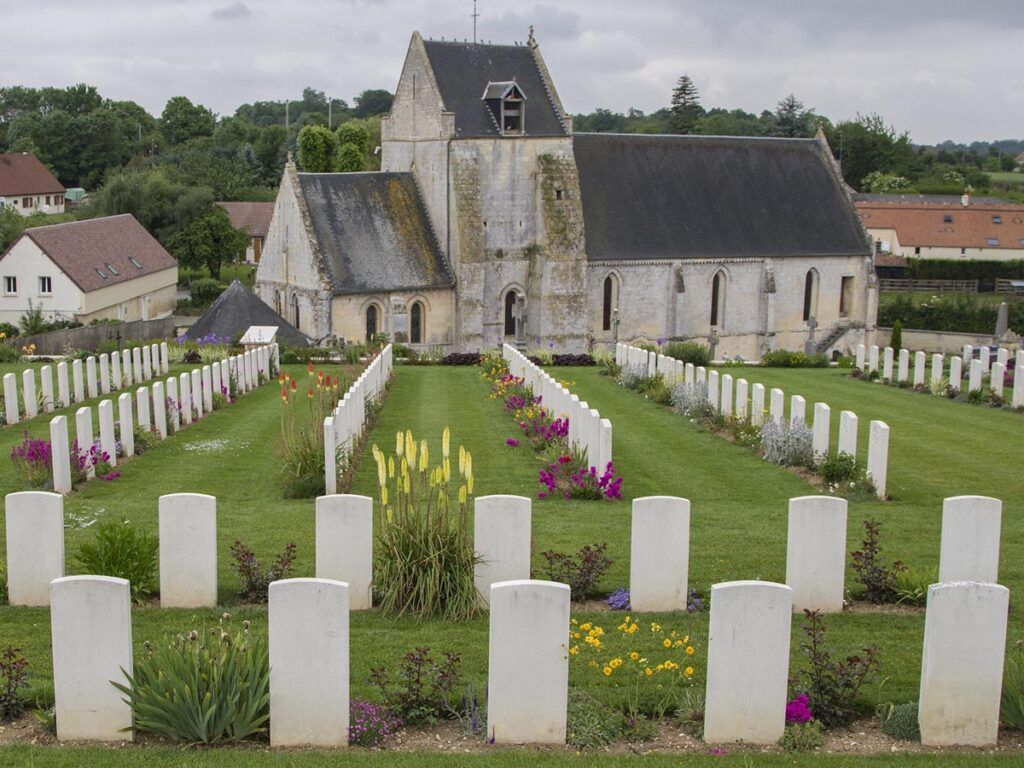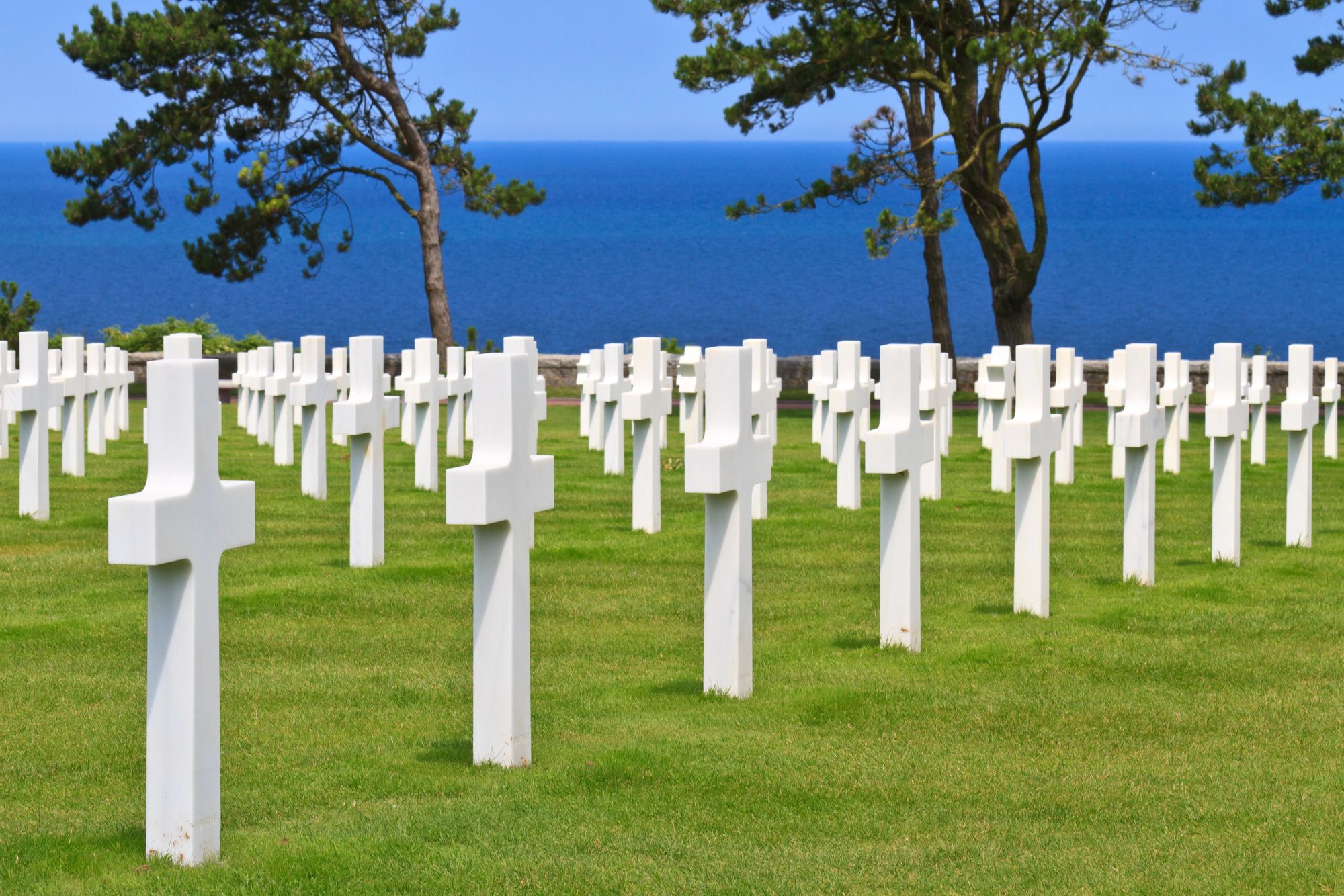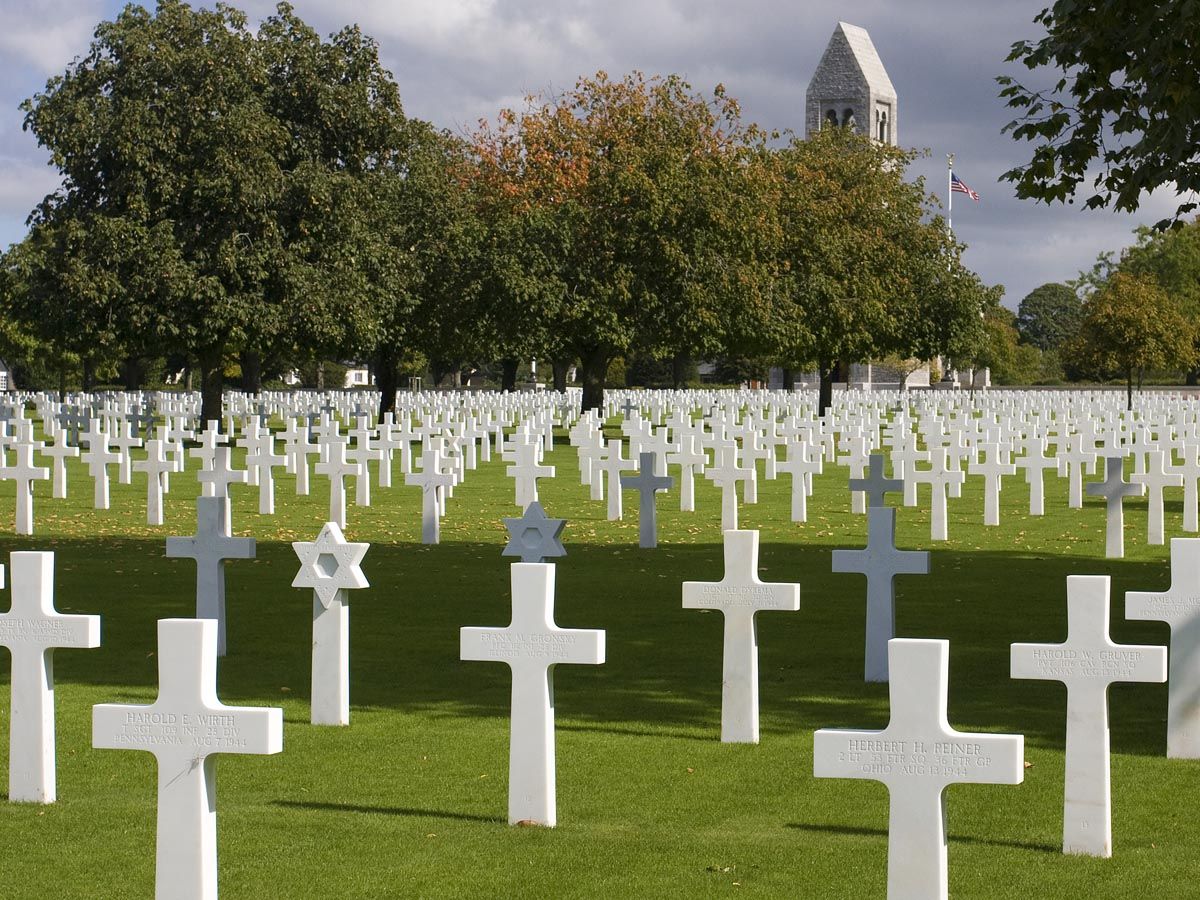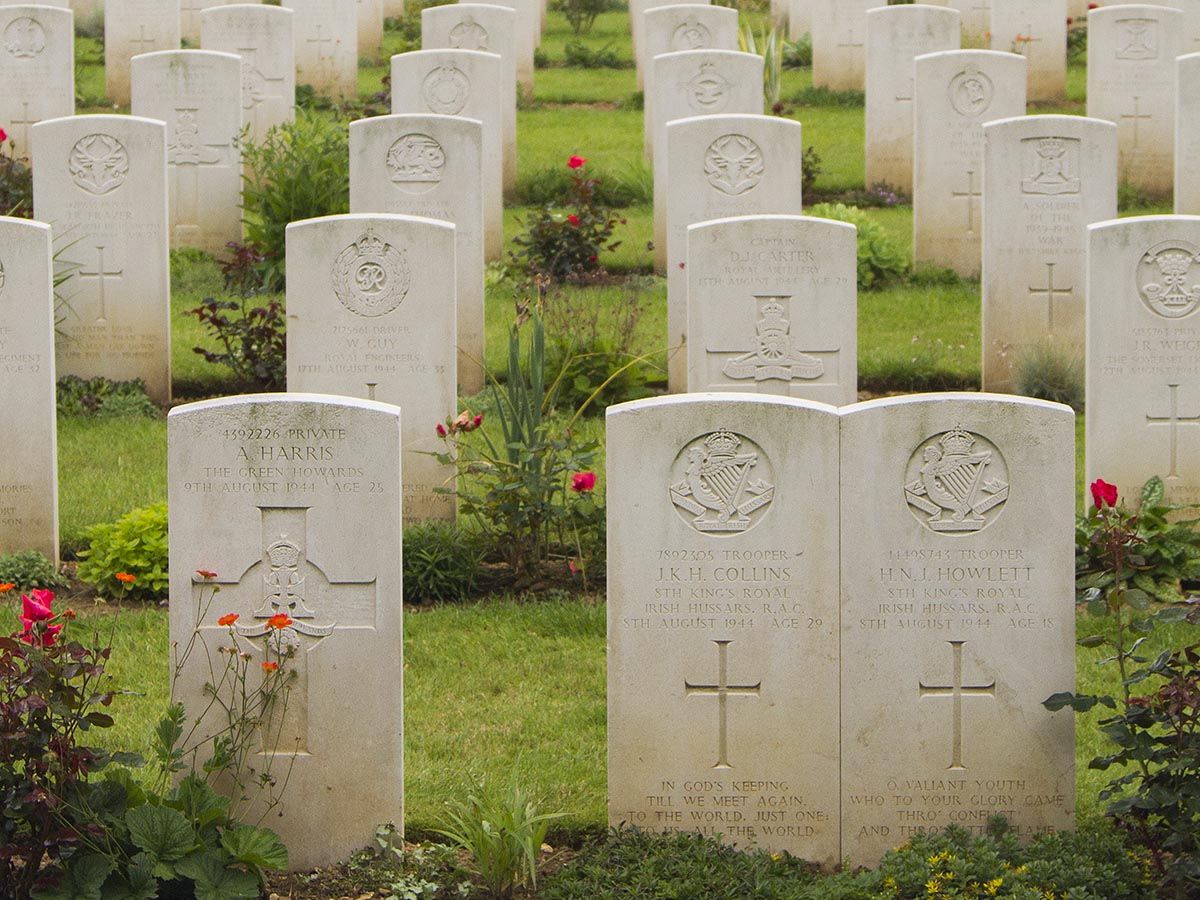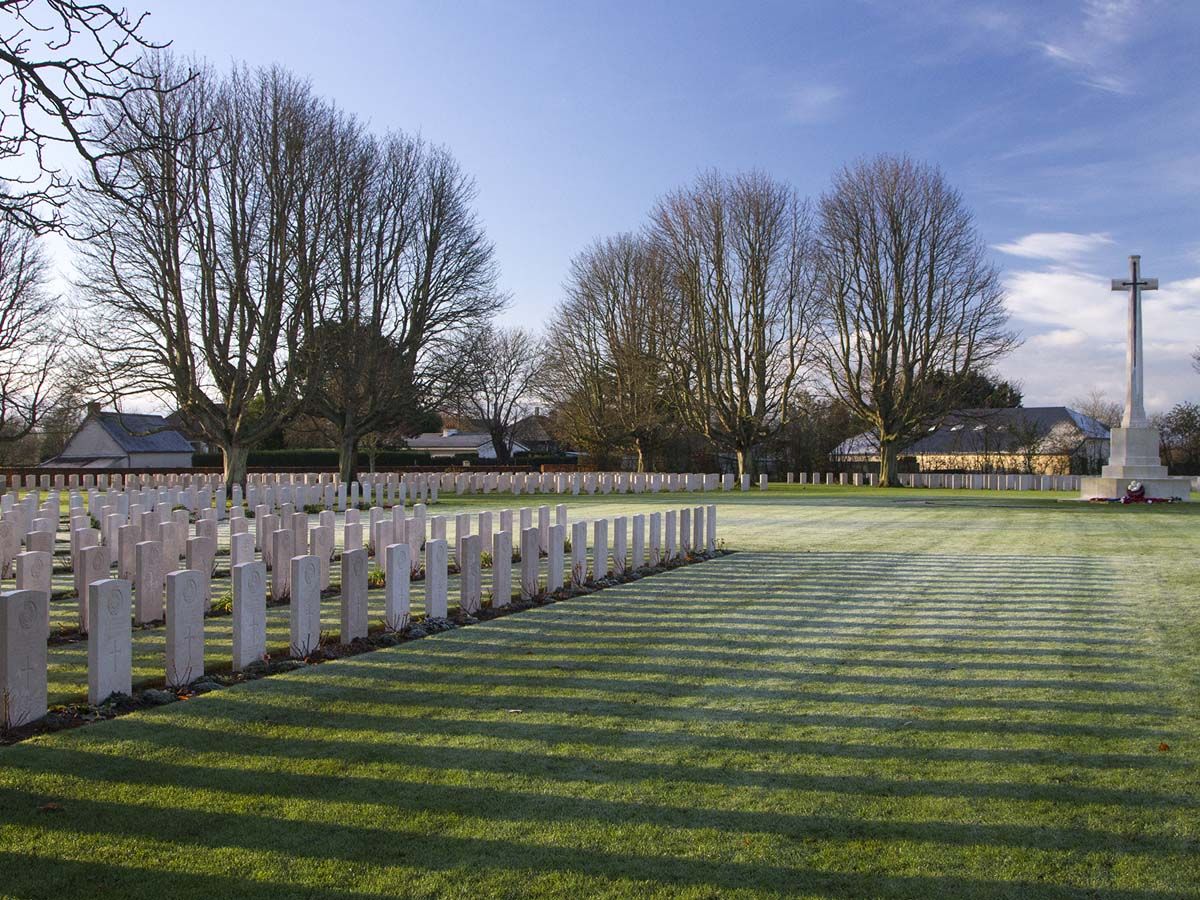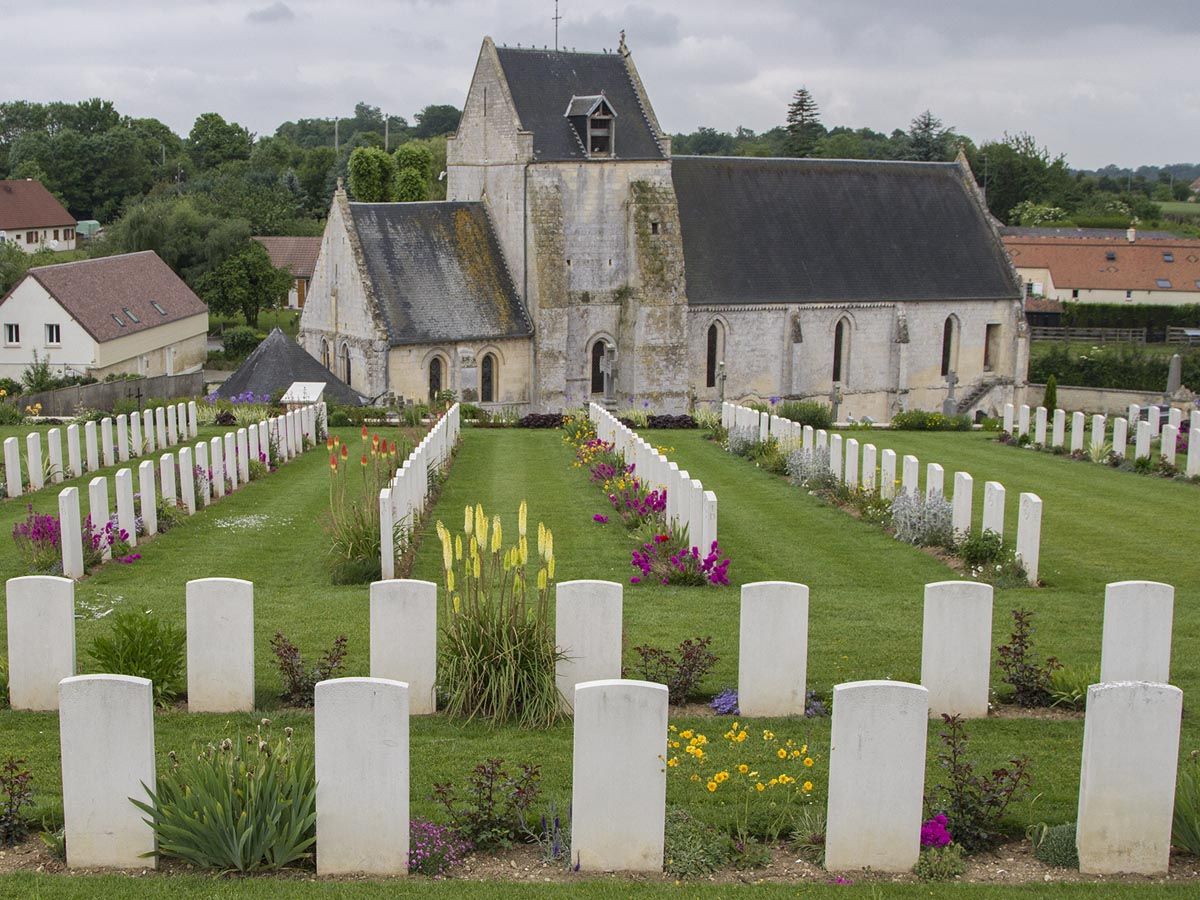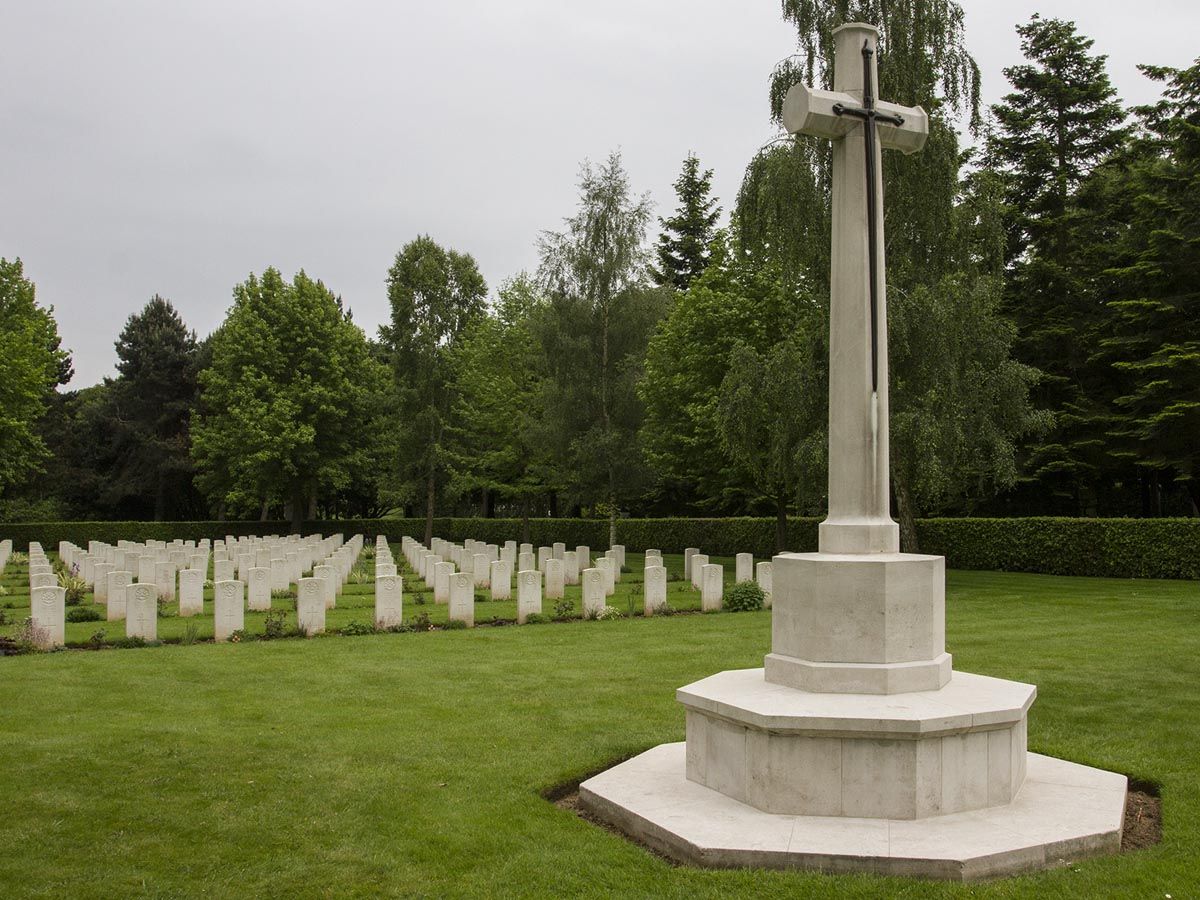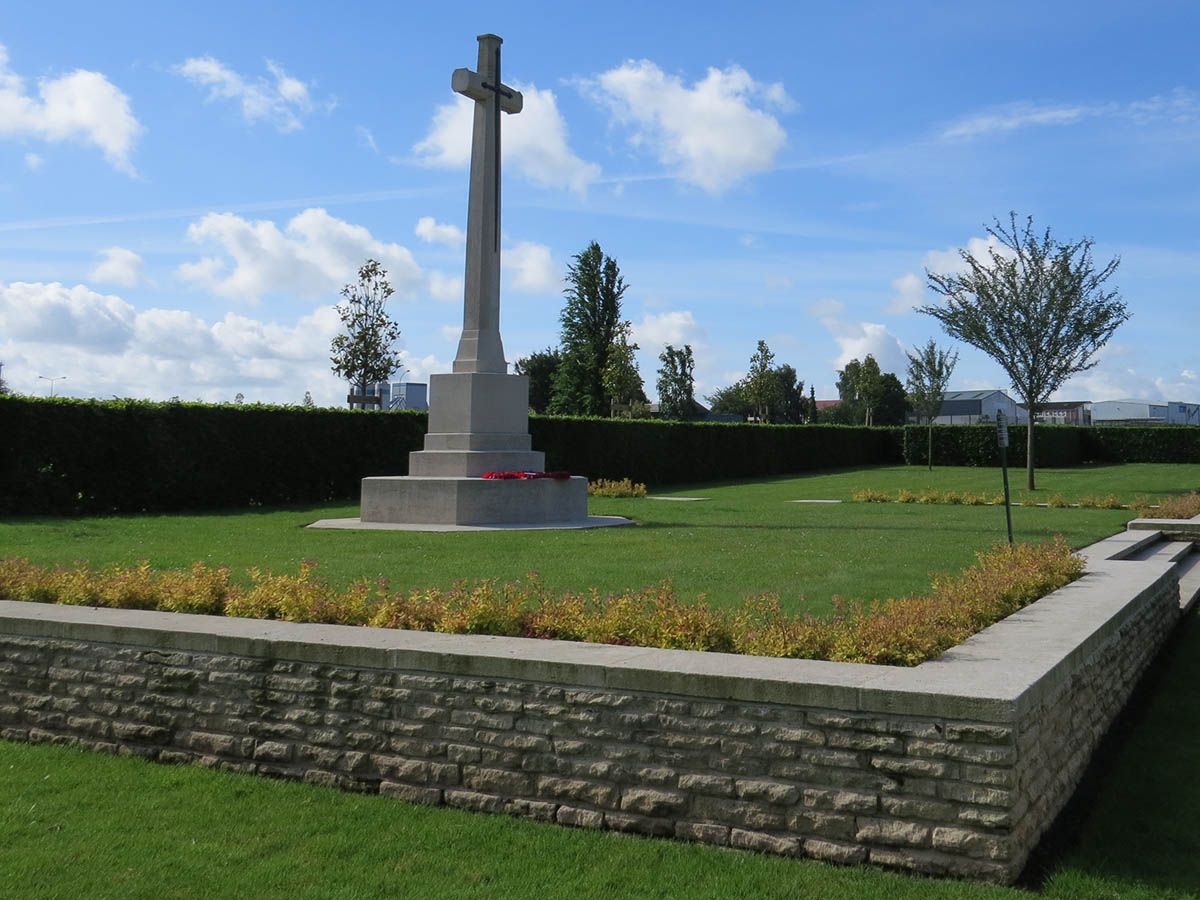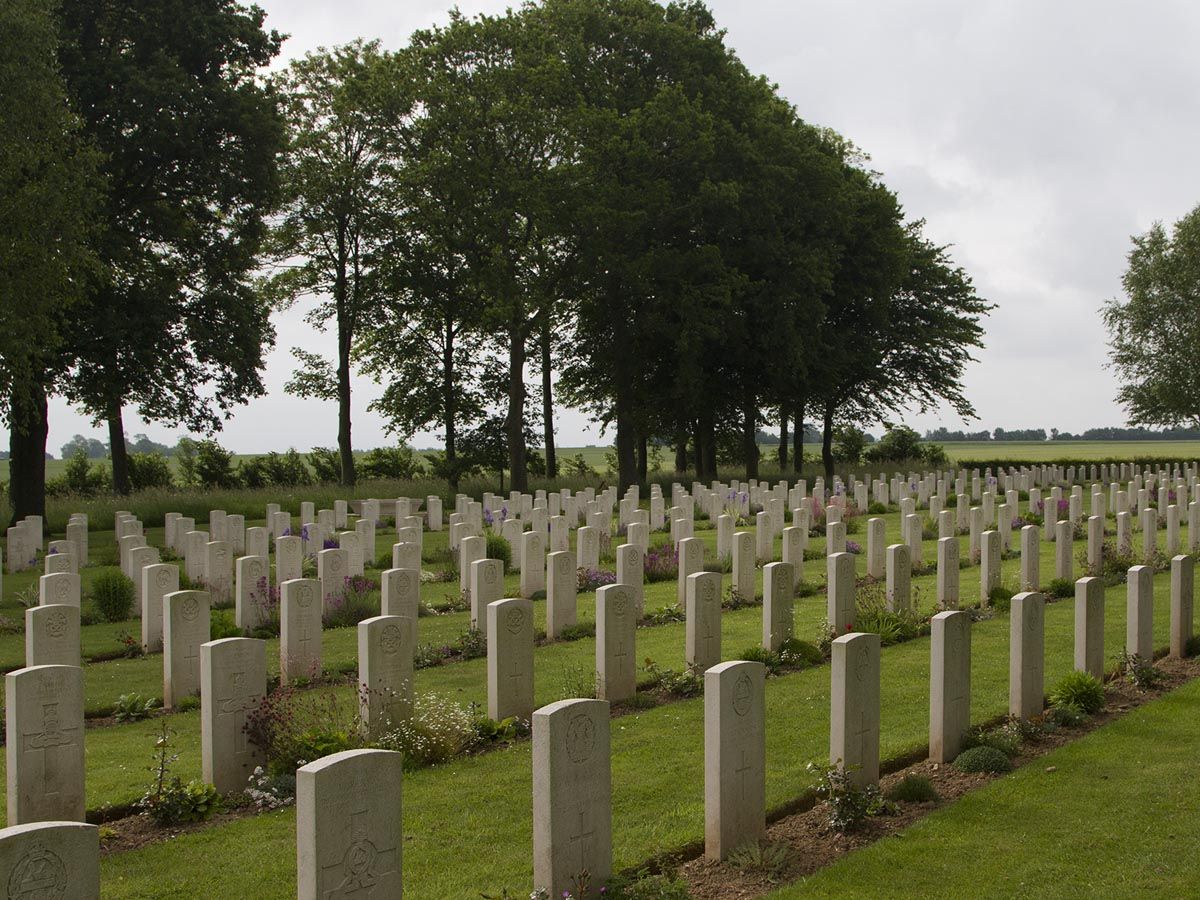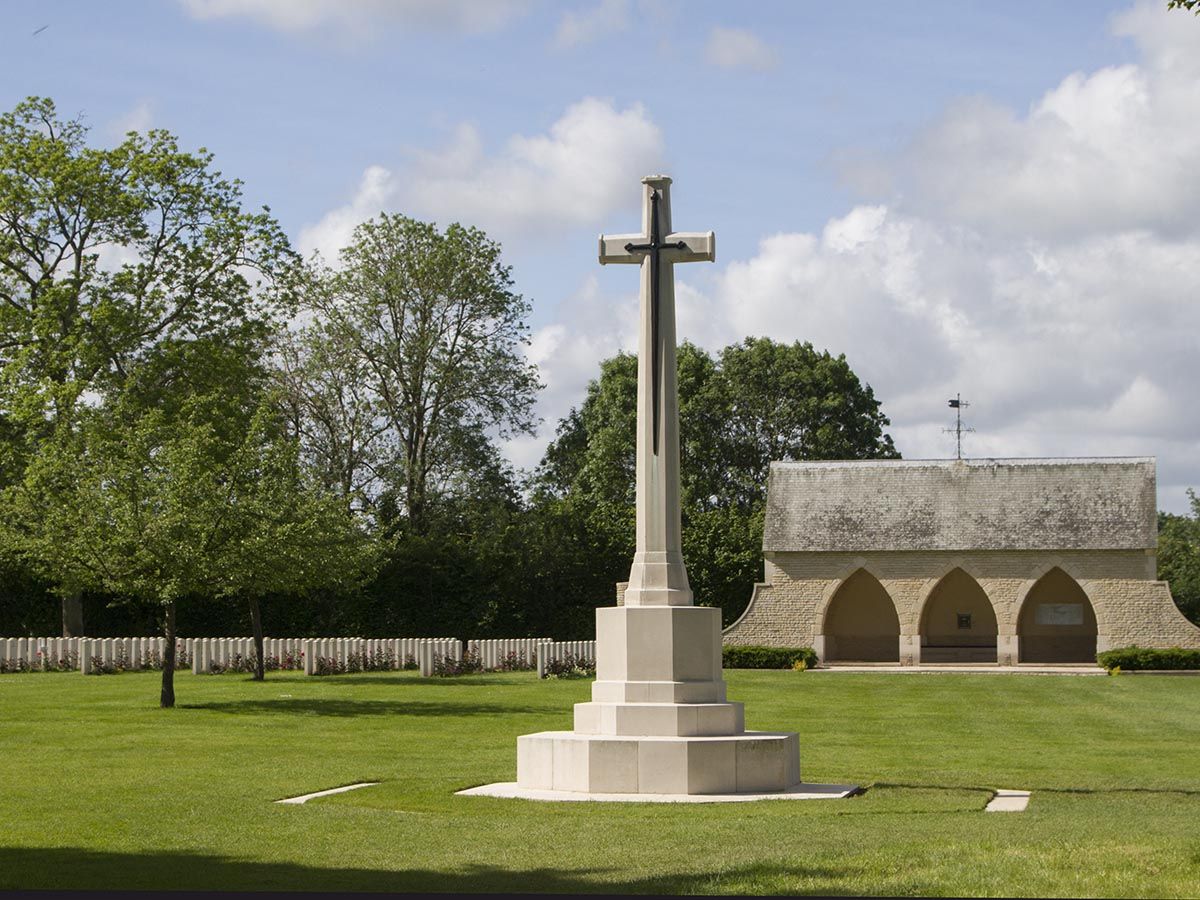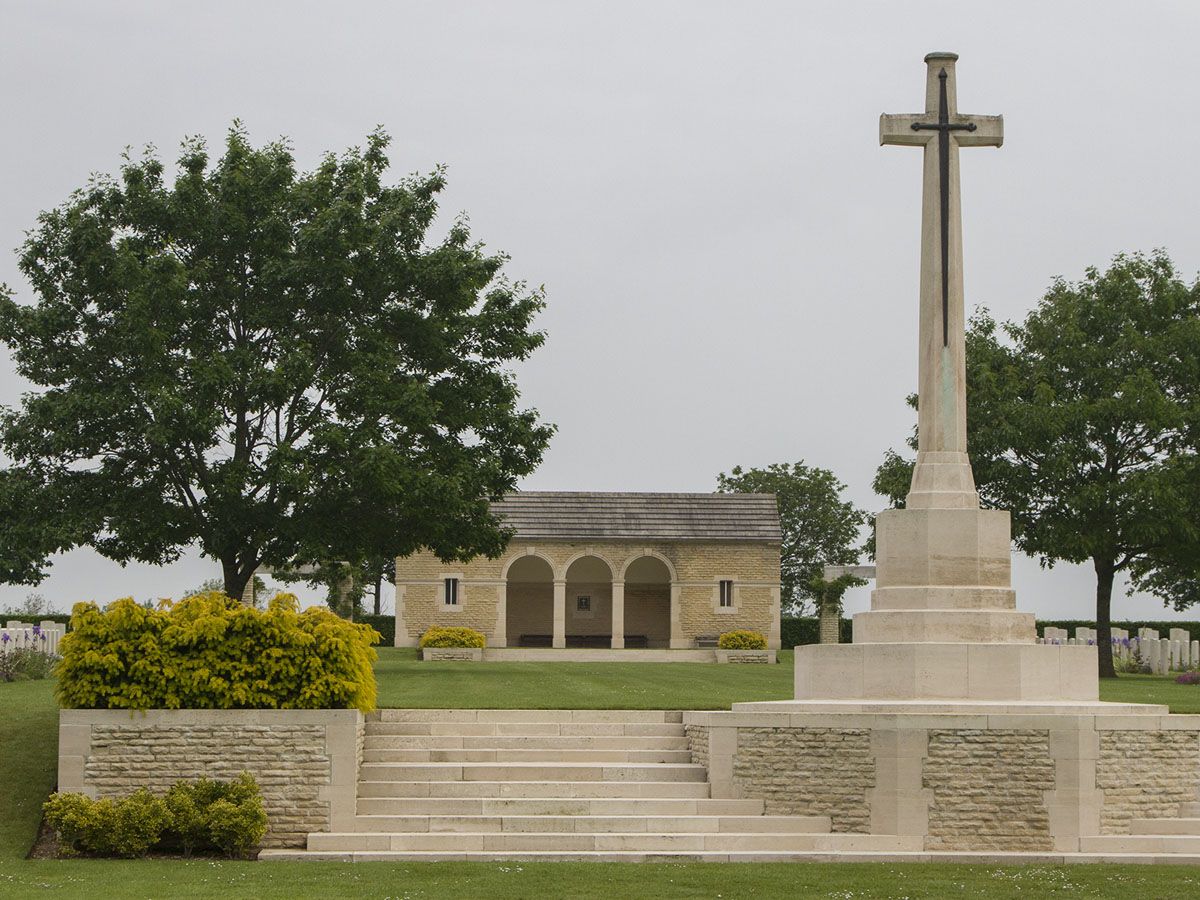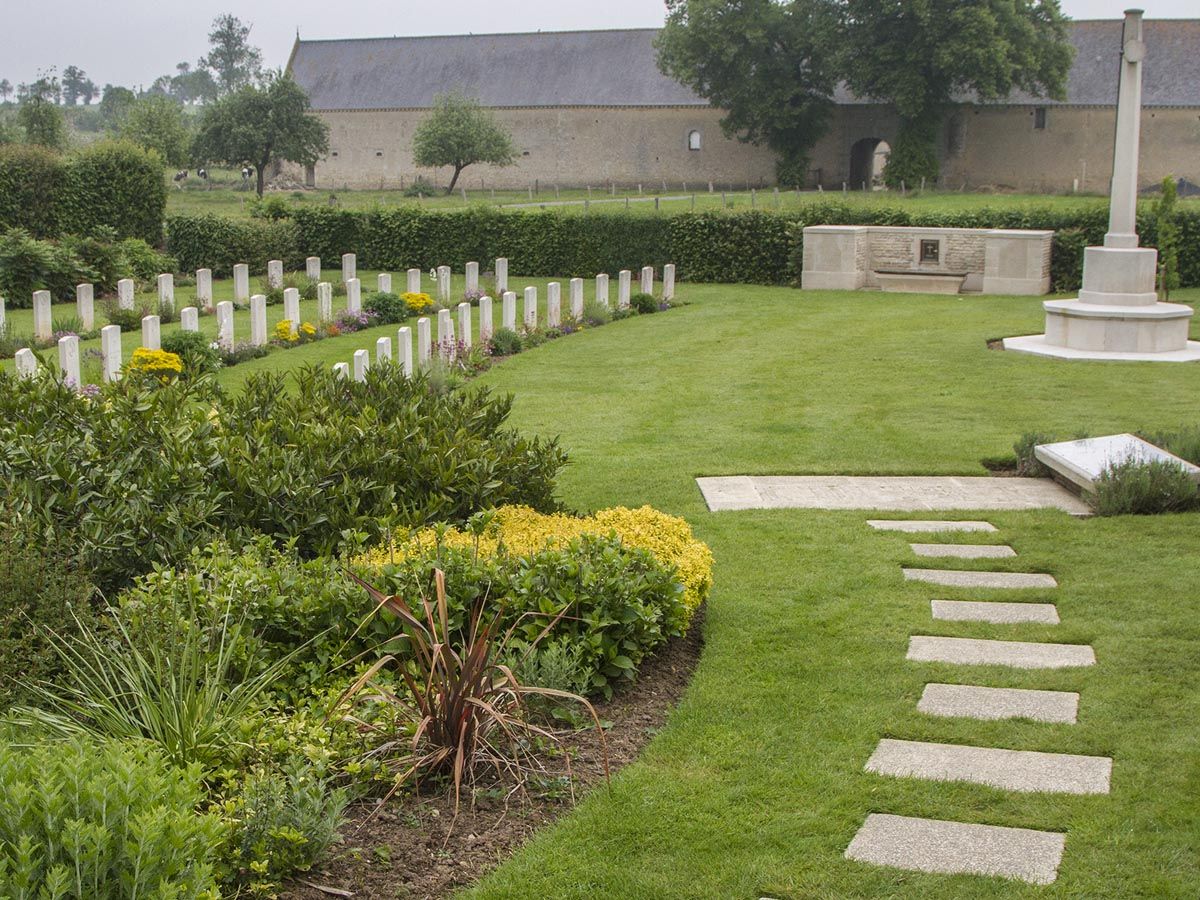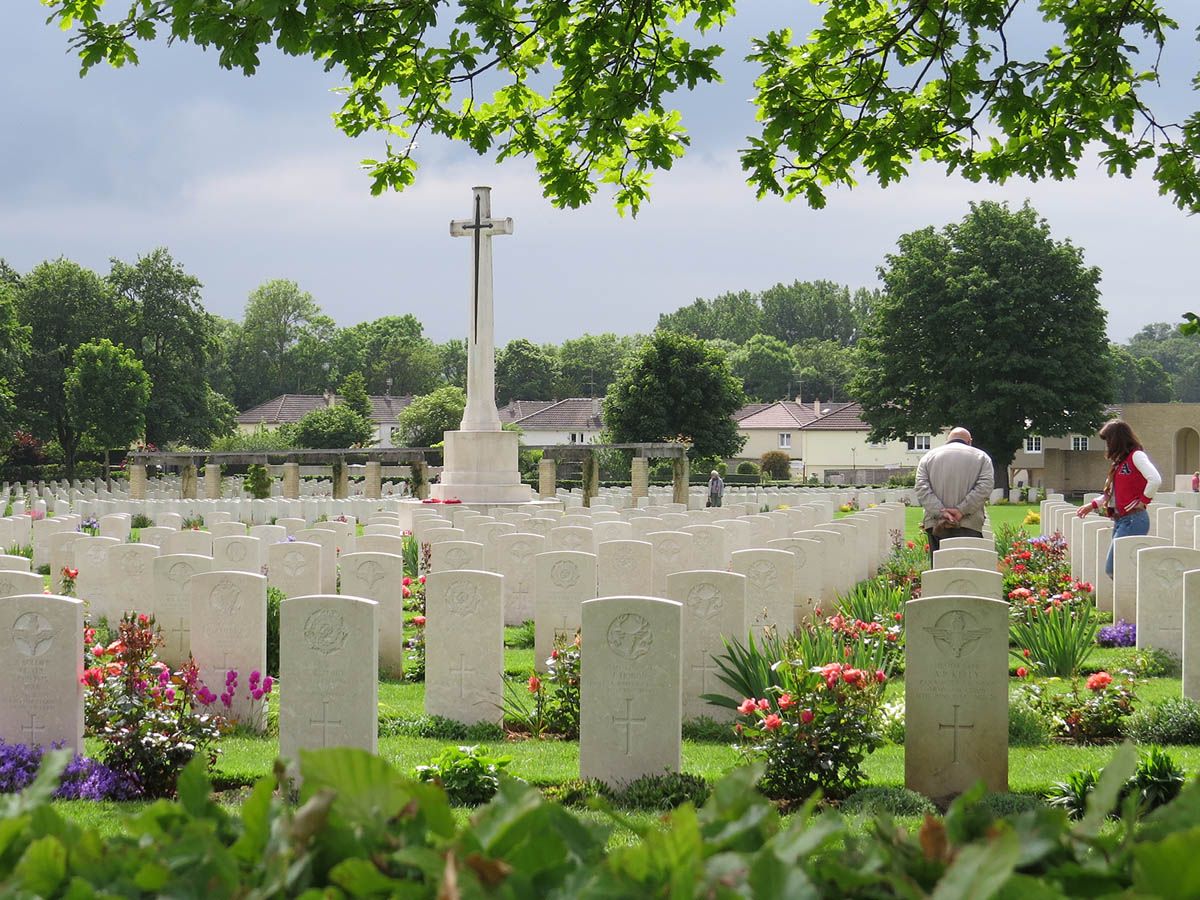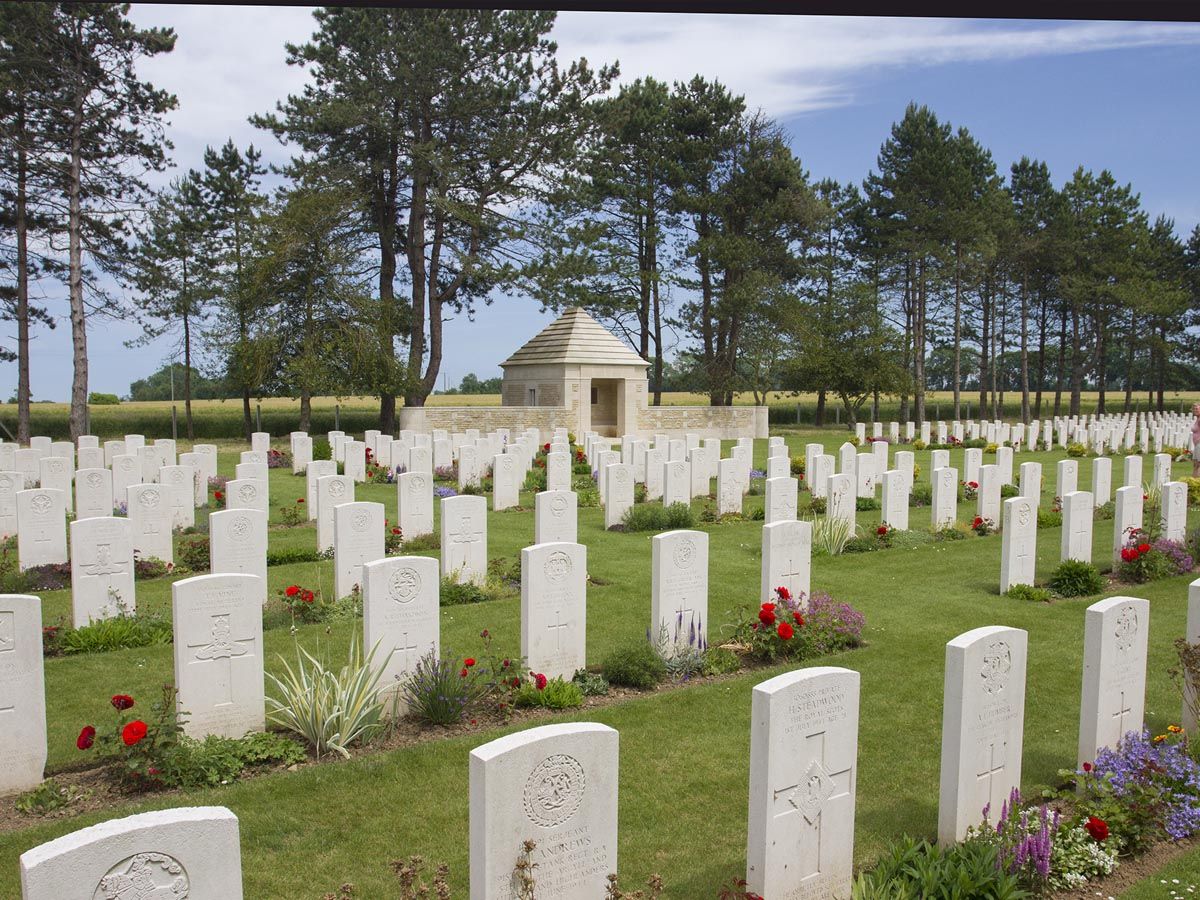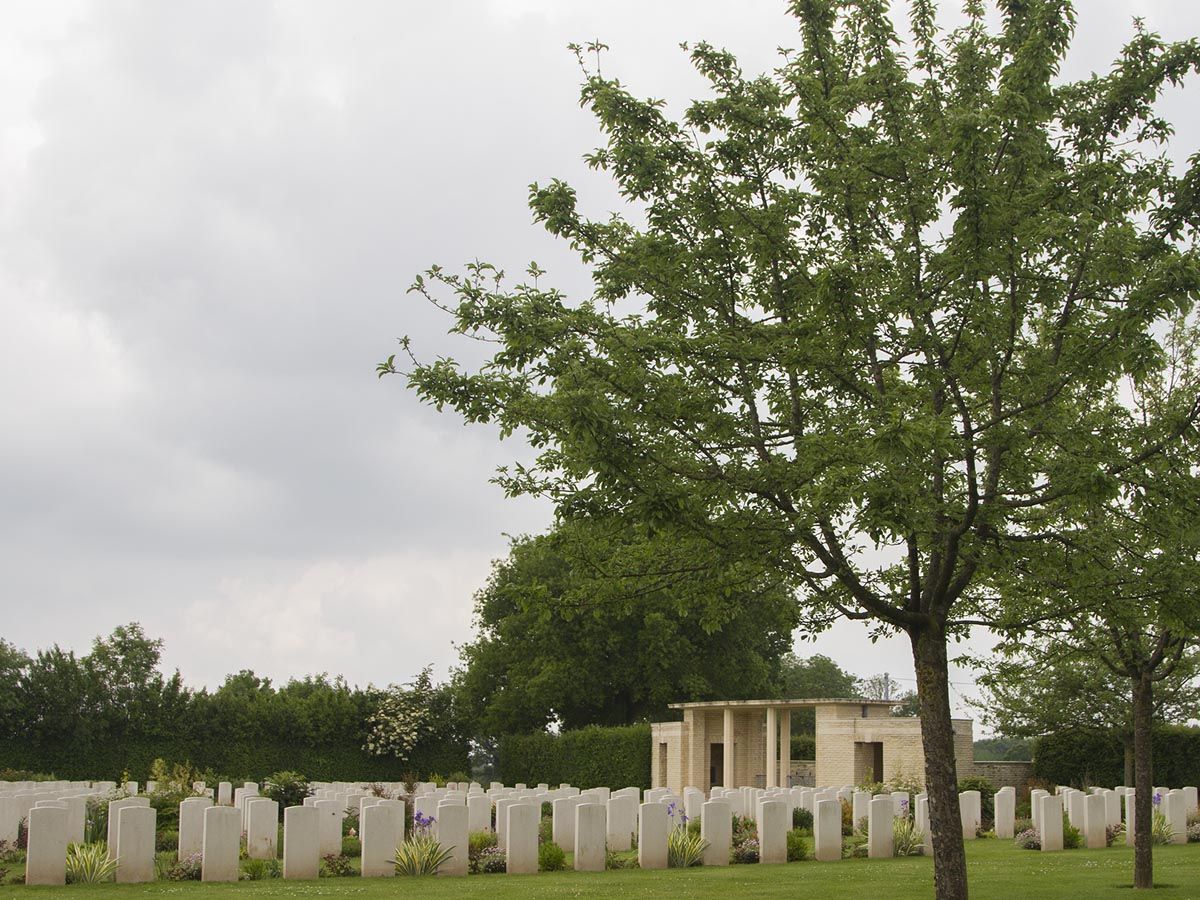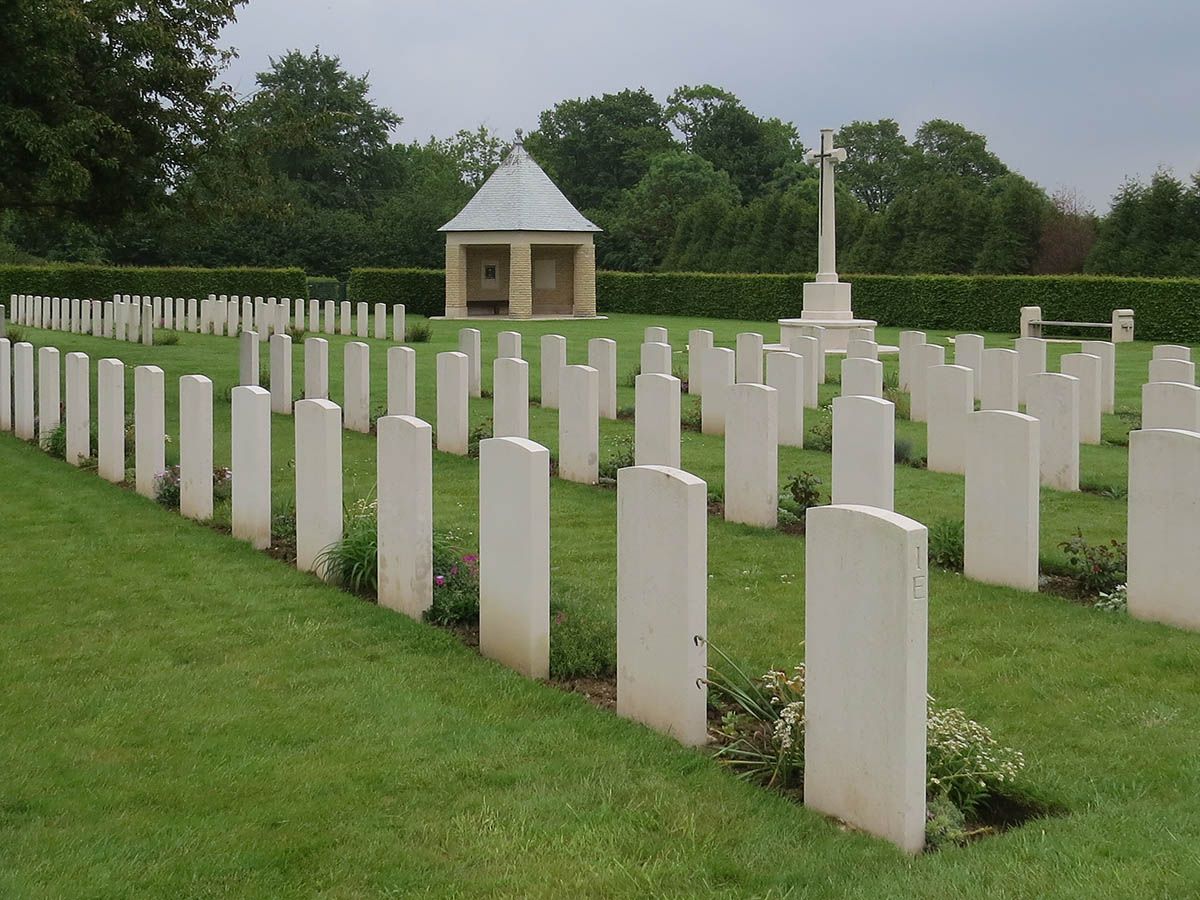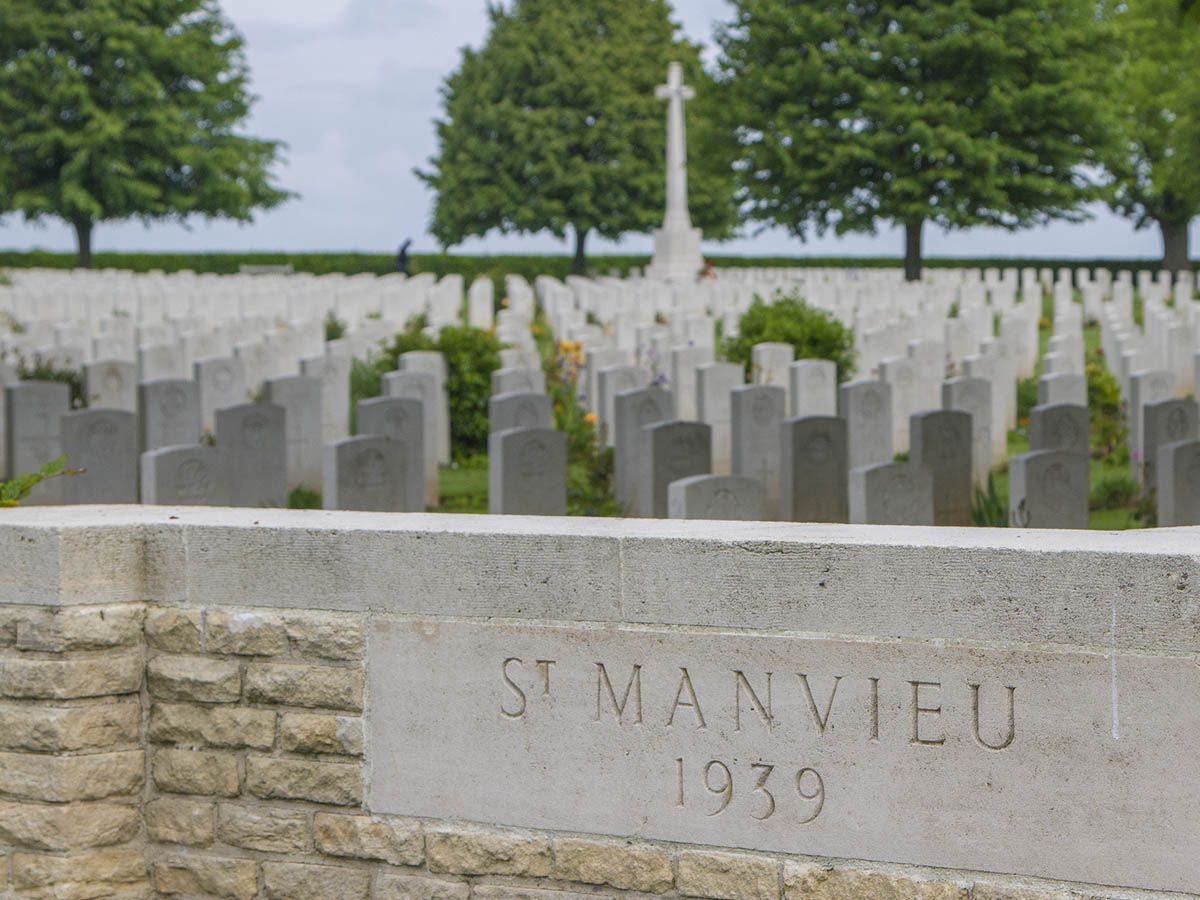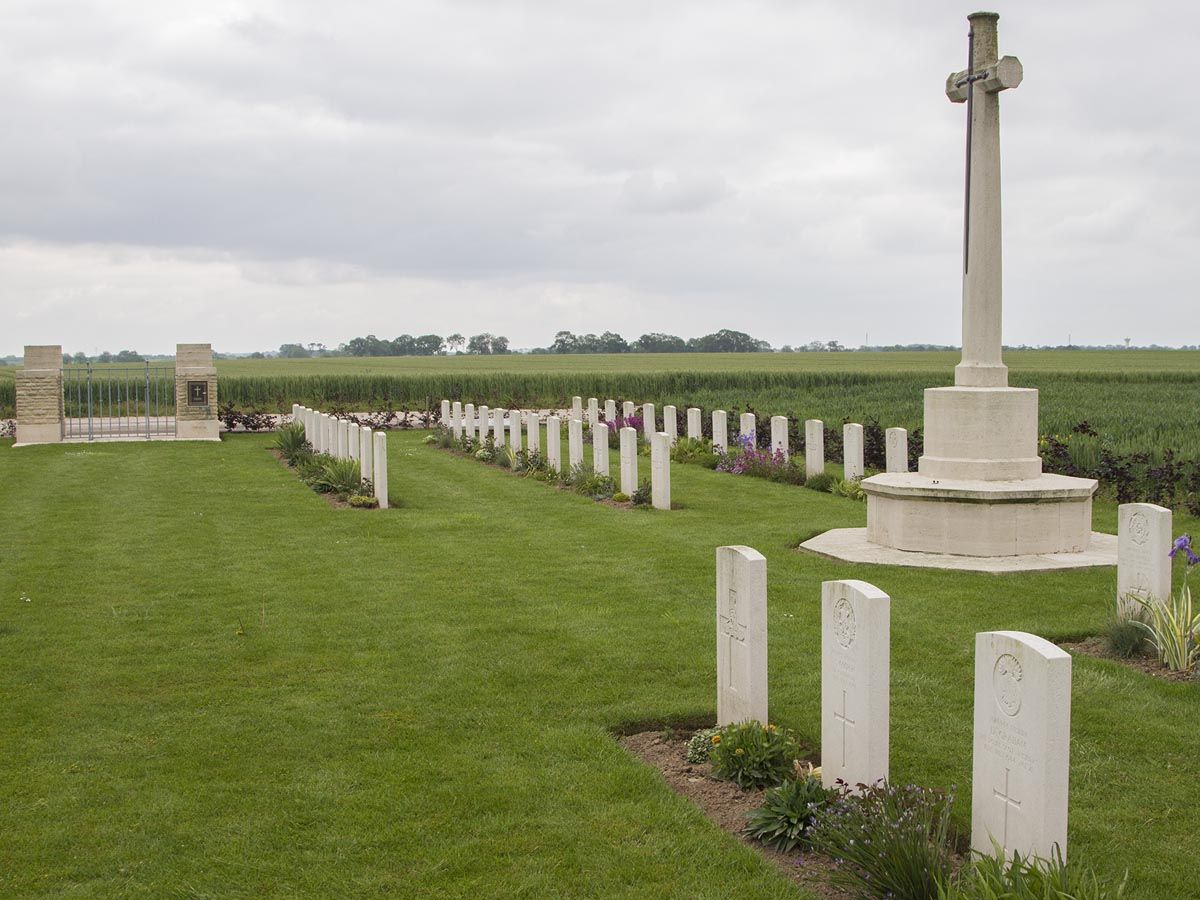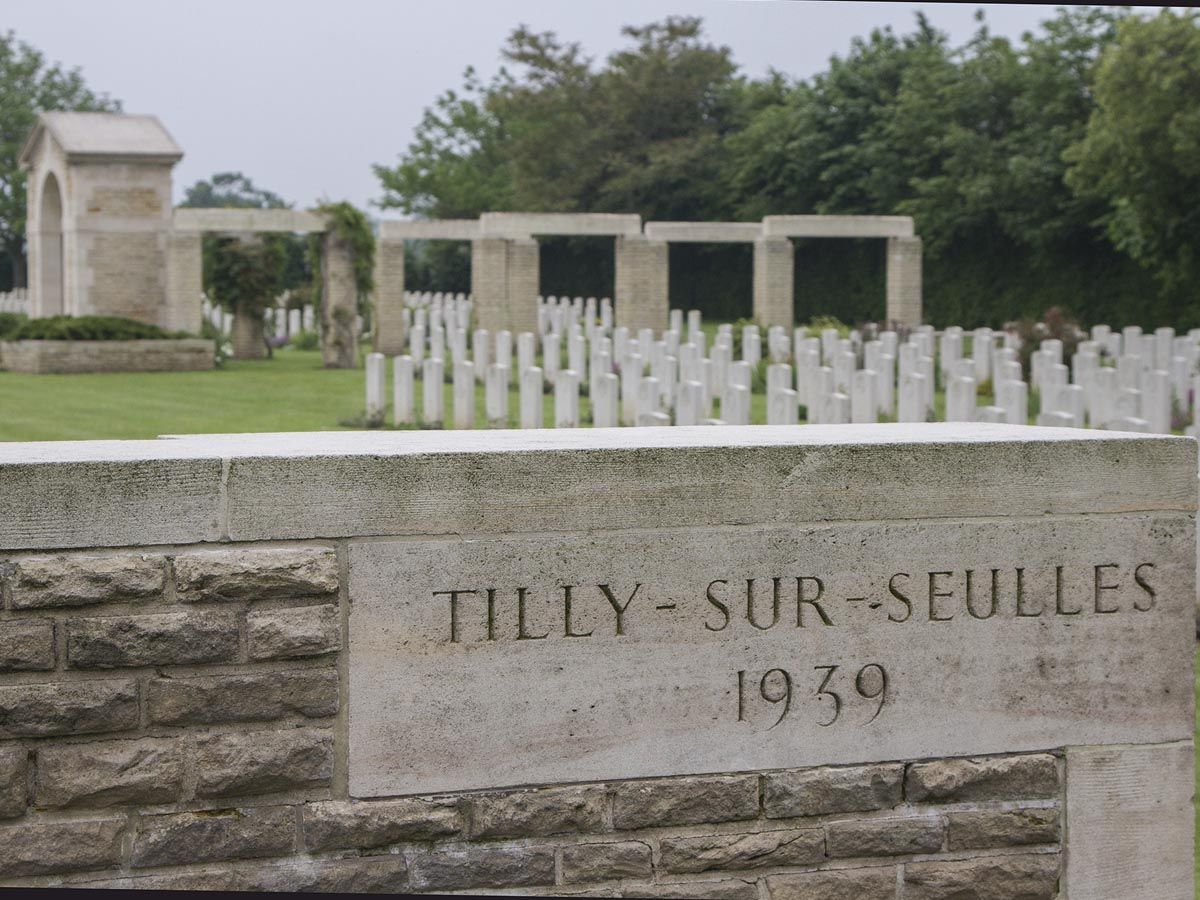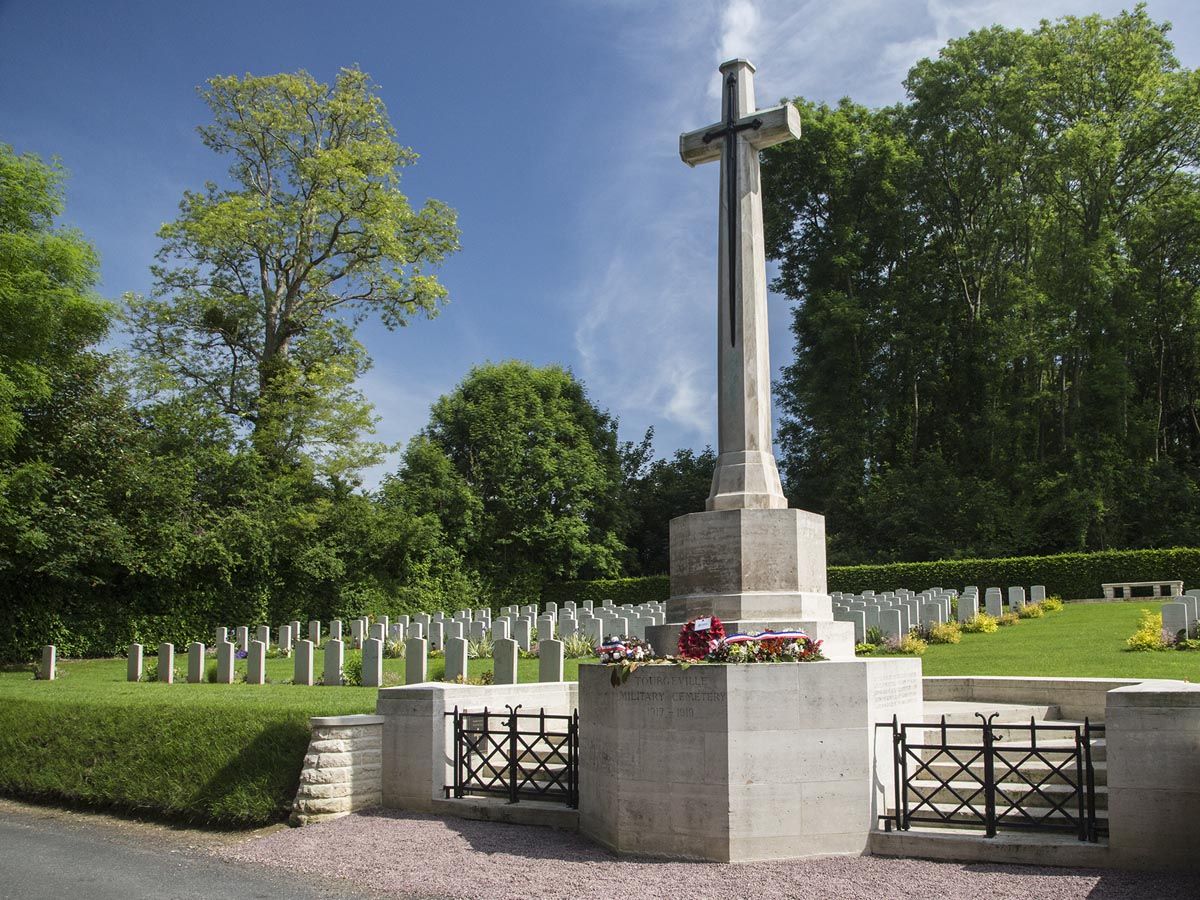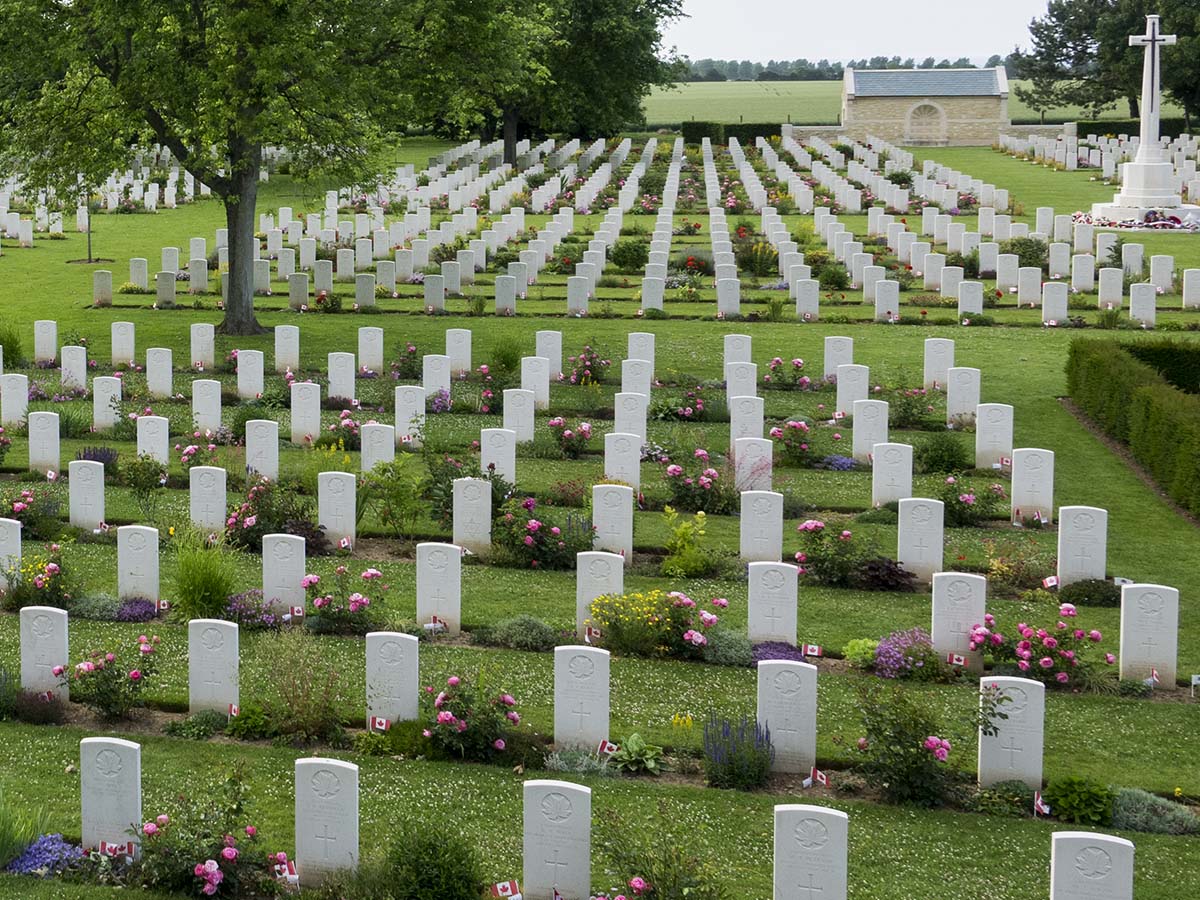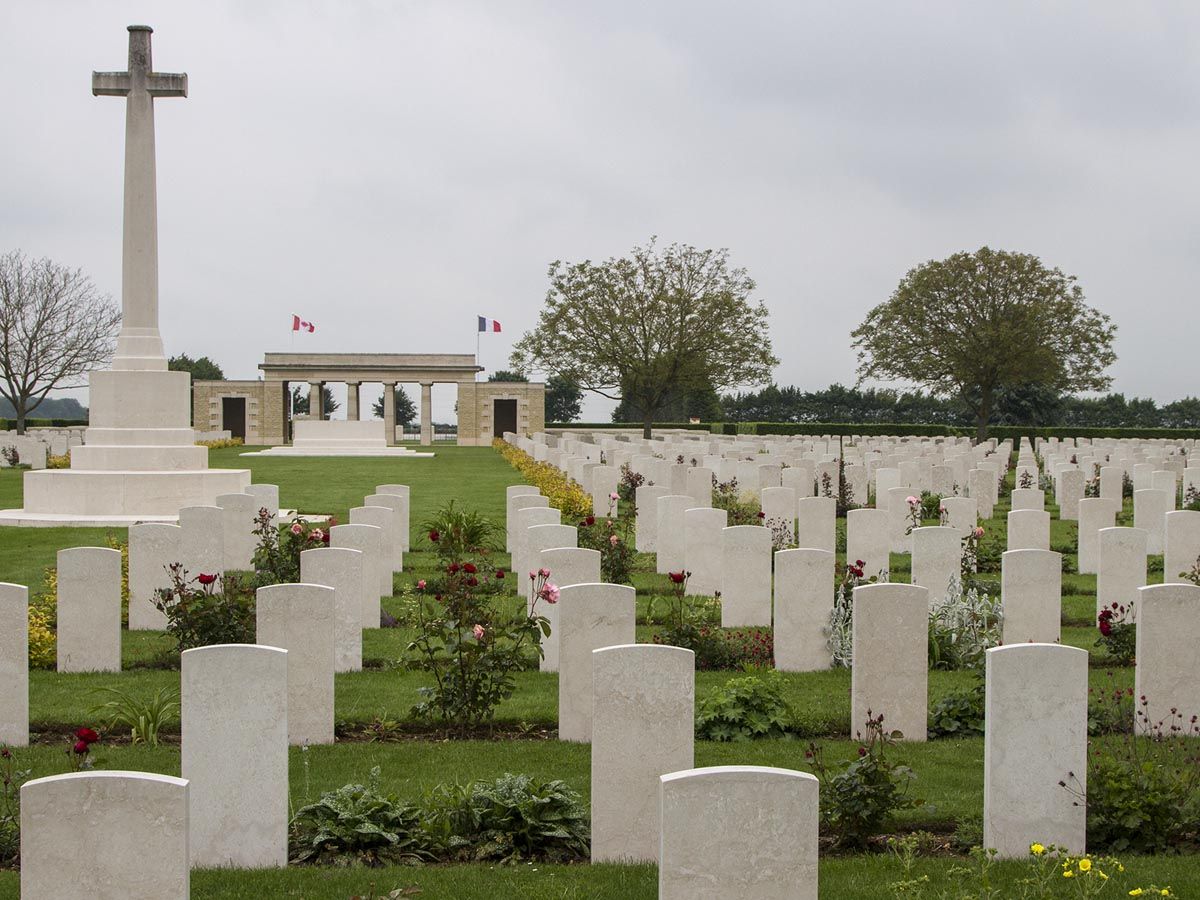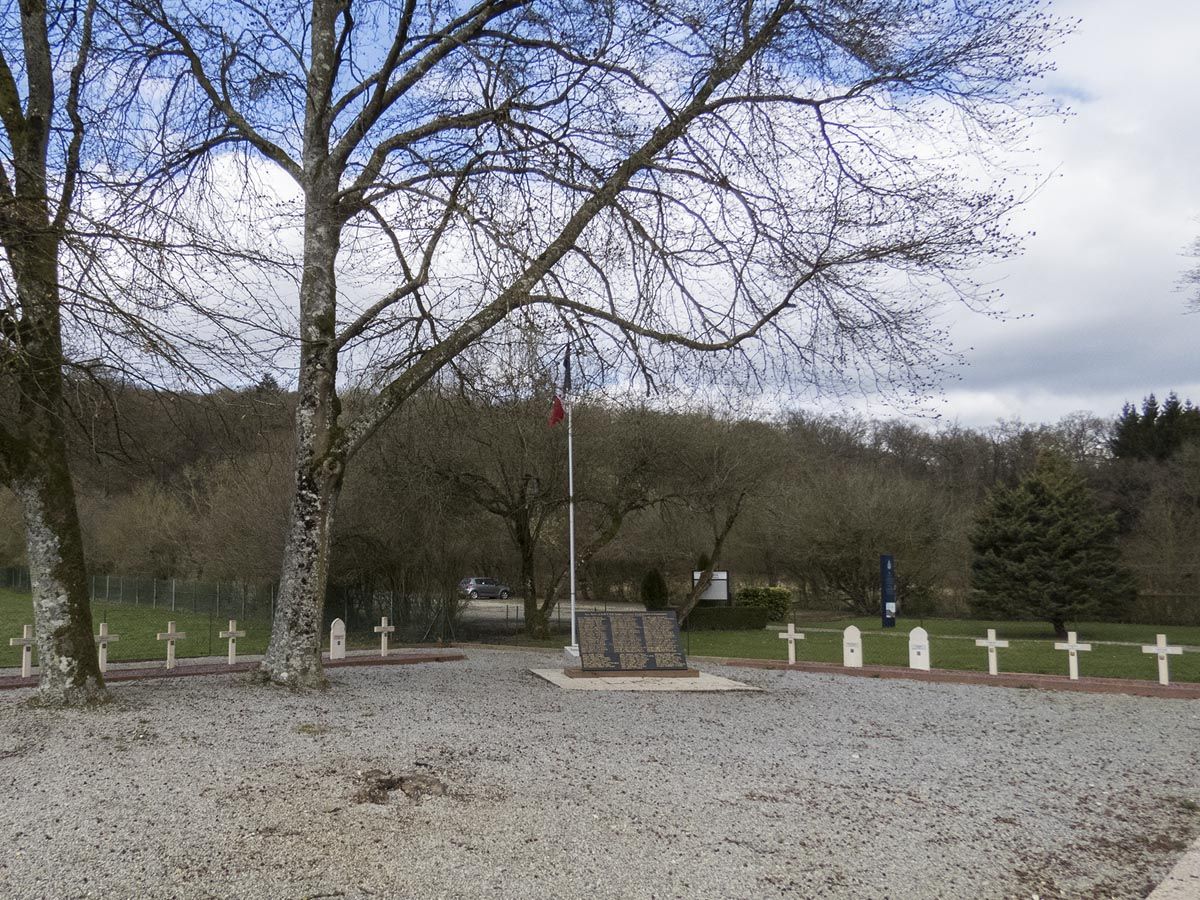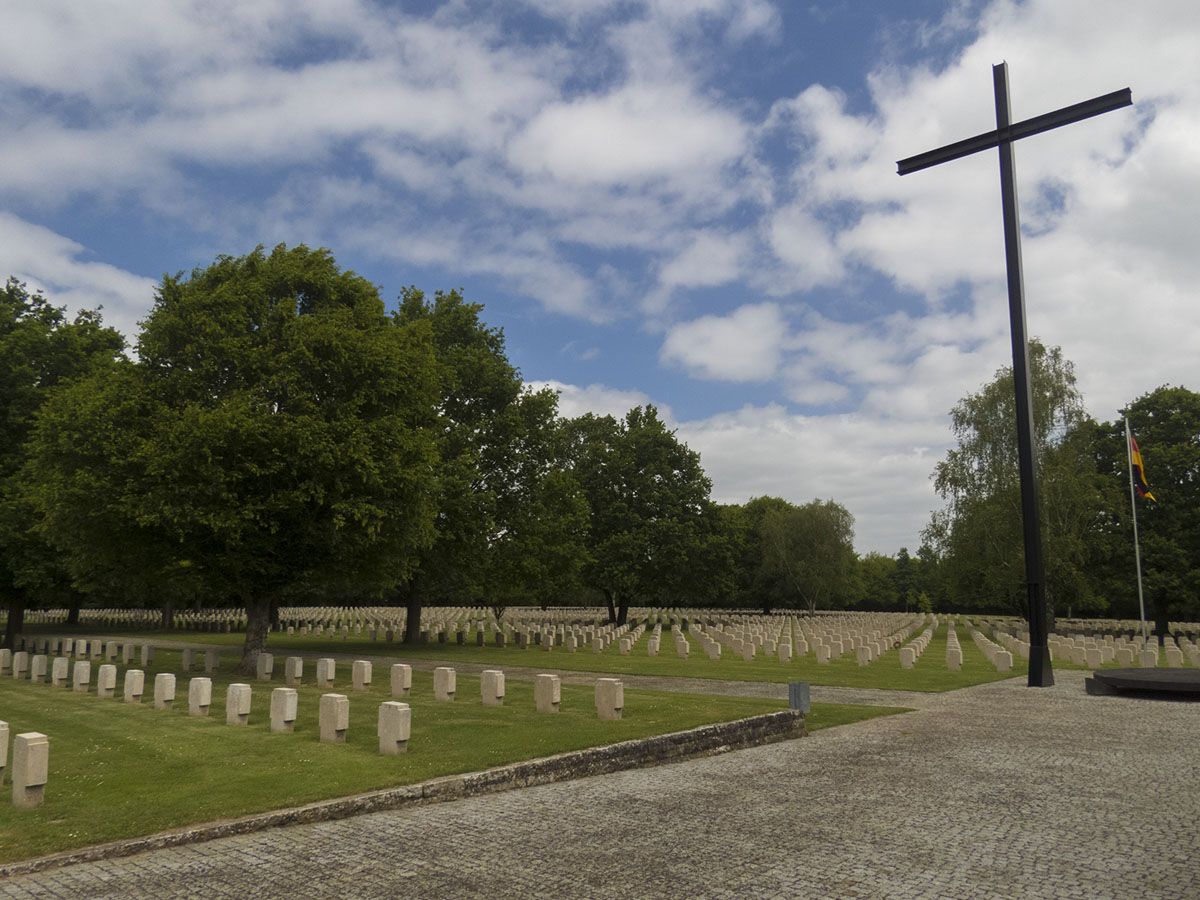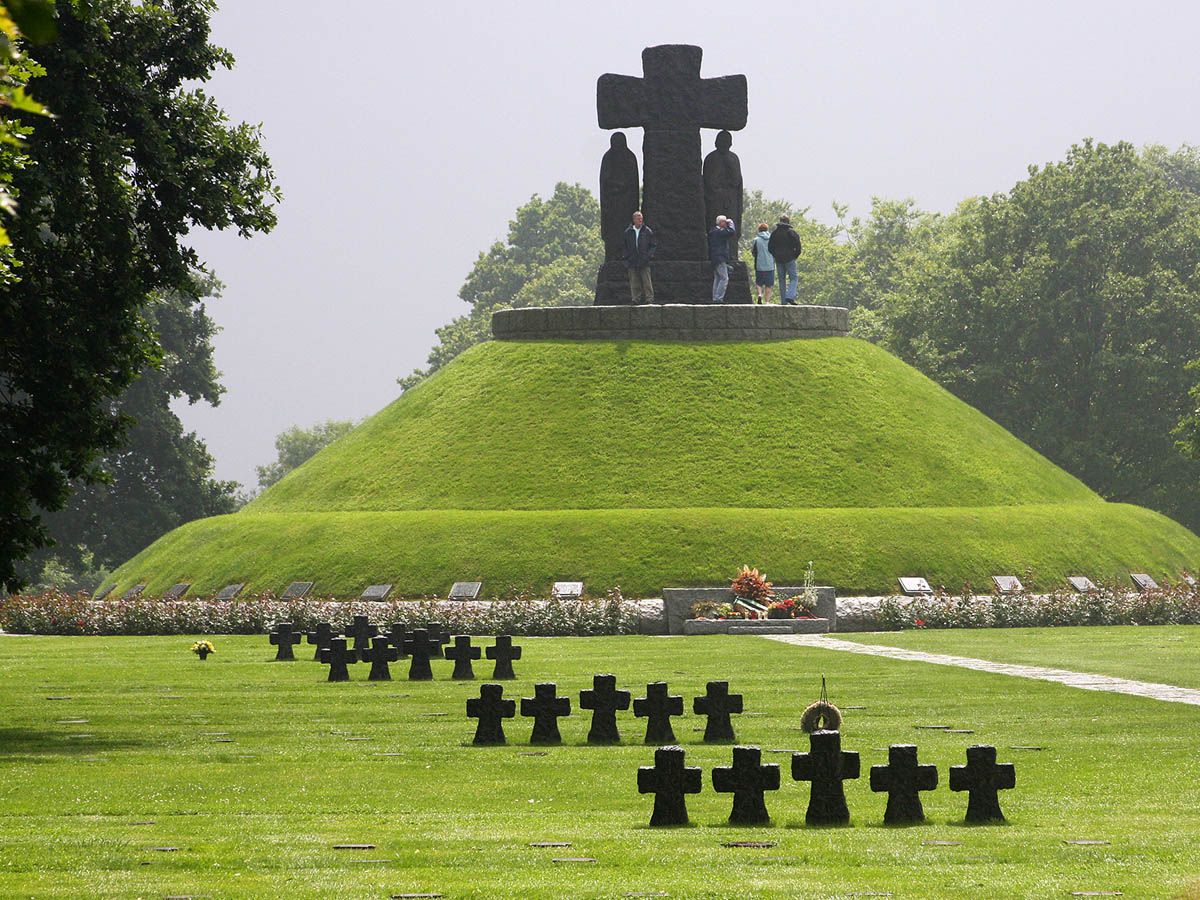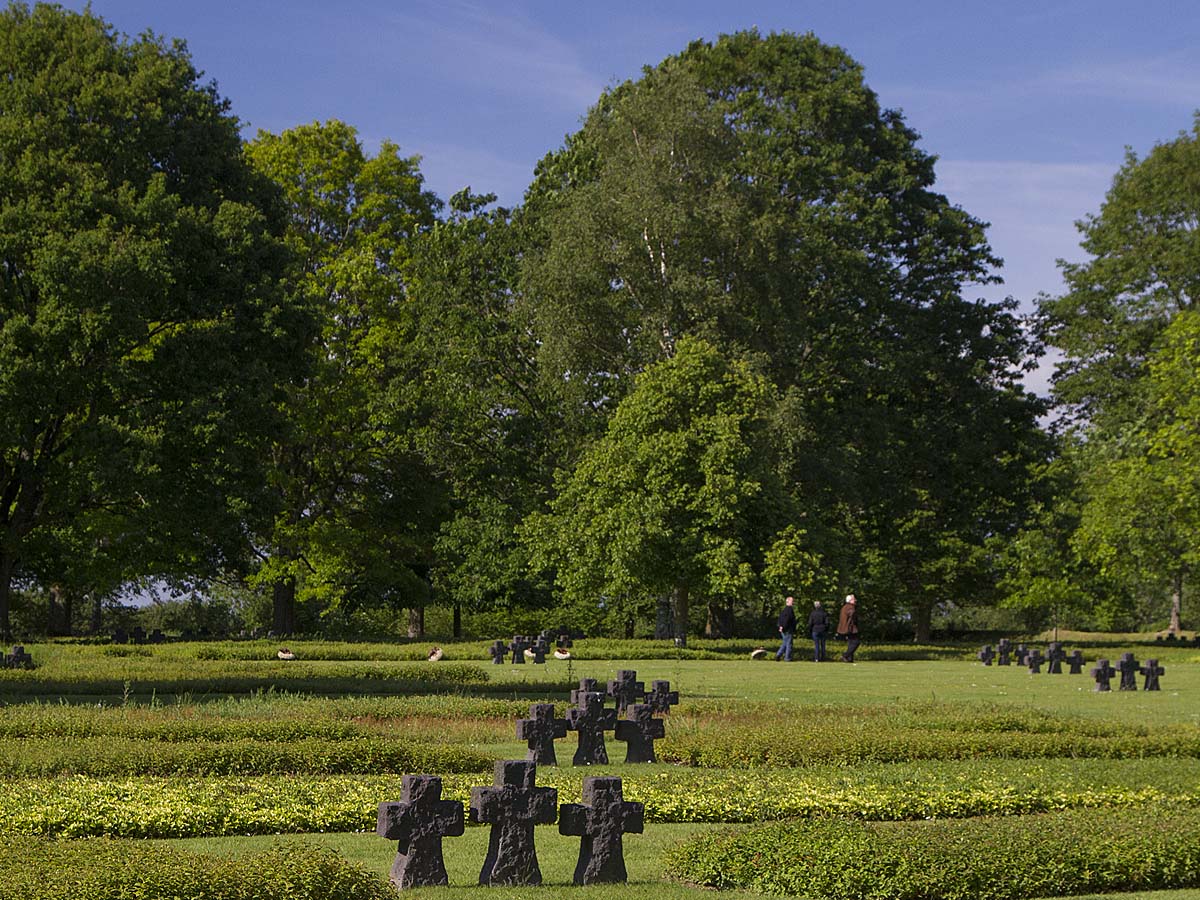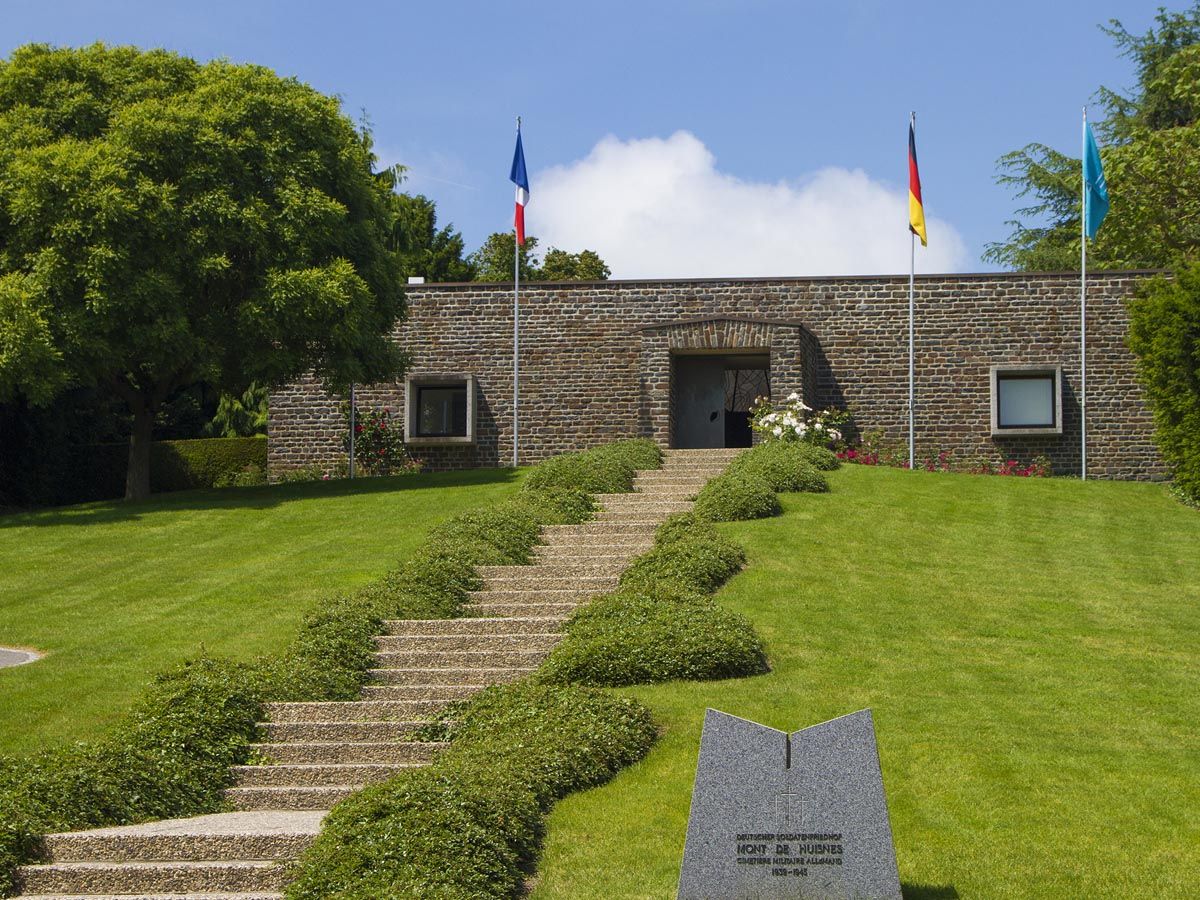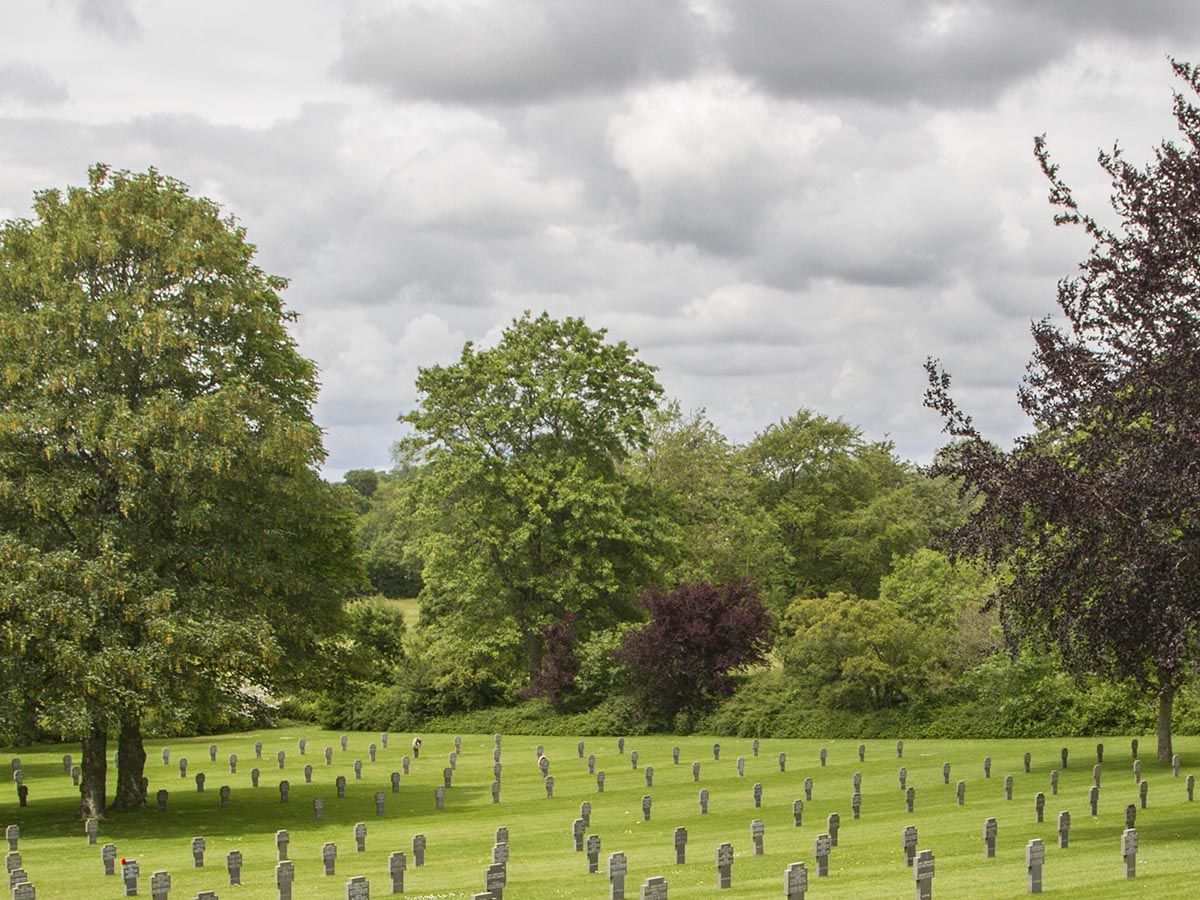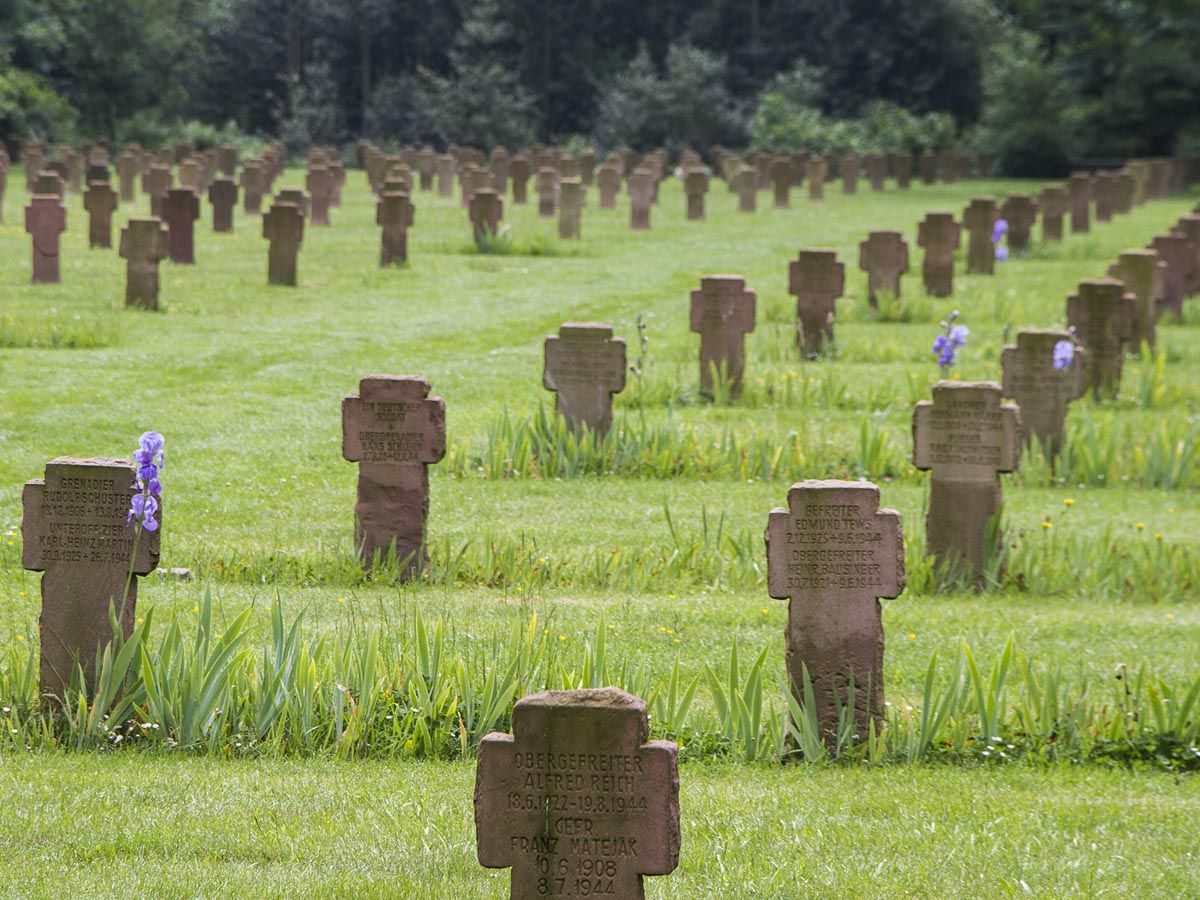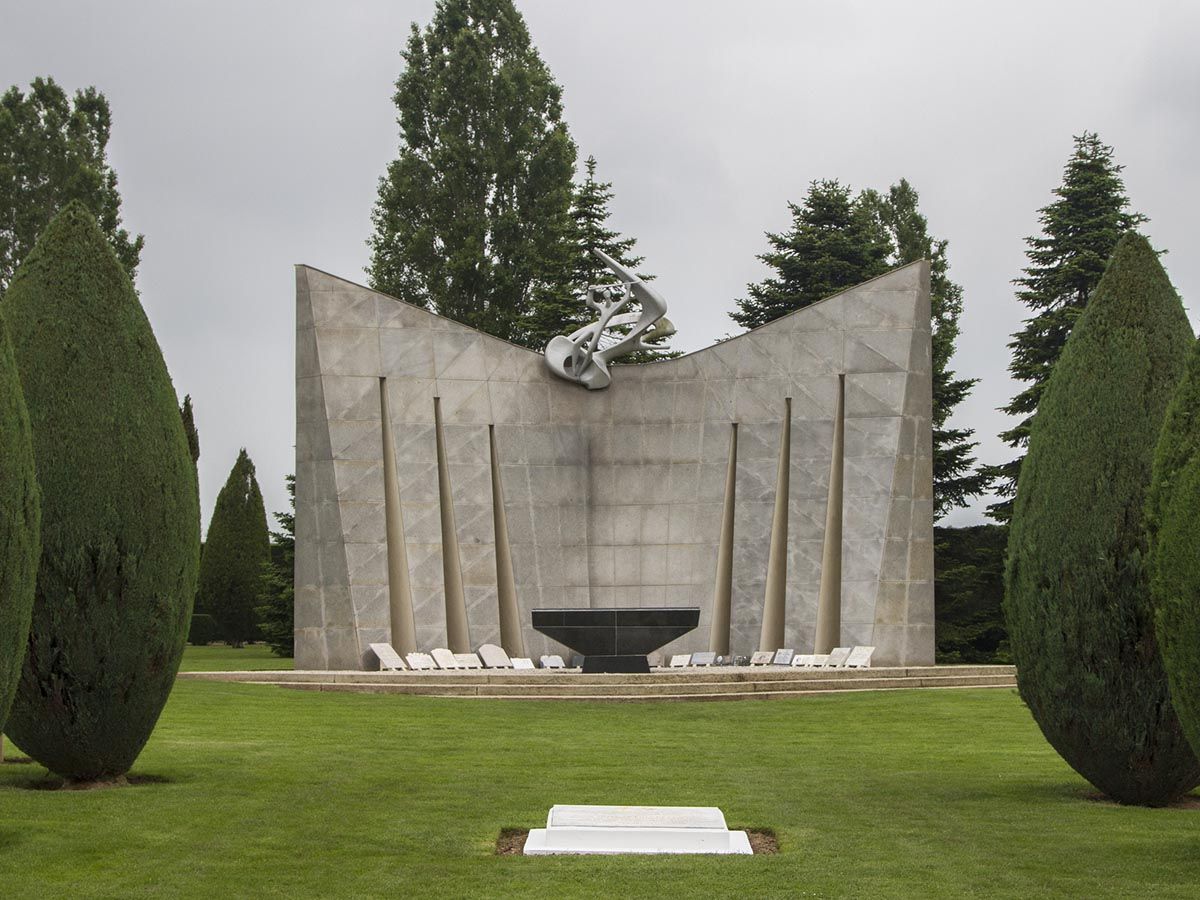Tucked away in the peaceful countryside of Calvados, Normandy, Brouay War Cemetery stands as a solemn reminder of the sacrifice made by Allied forces in the summer of 1944. This final resting place, located alongside the village church, contains 377 Commonwealth soldiers who fell during the intense fighting around Caen in June and July 1944. The cemetery holds a special significance for those tracing the path of the Normandy campaign, as it represents the fierce battles fought by Commonwealth forces attempting to encircle Caen from the south.
You’ll find this moving site conveniently positioned along the N13 highway, halfway between the historic towns of Bayeux and Caen. As you walk among the precisely aligned headstones, each one tells a story of courage and sacrifice during those pivotal months after D-Day.
The immaculately maintained grounds invite quiet reflection, allowing you to connect with this important chapter of World War II history.
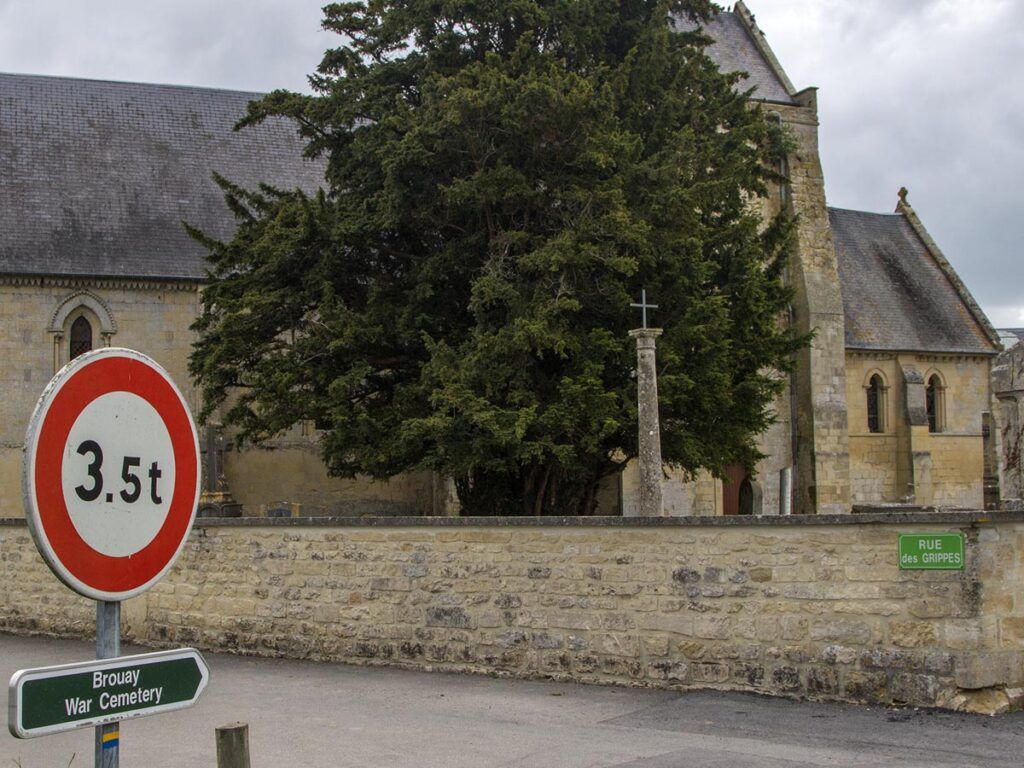
History and Significance
Brouay War Cemetery stands as a solemn testament to the sacrifice of Commonwealth soldiers during the Normandy Campaign of World War II. This site preserves the memory of those who fell during the critical operations around Caen in the summer of 1944.
Creation of the Cemetery
Brouay War Cemetery was established shortly after the Allied landings in Normandy. The cemetery contains primarily soldiers who died during the heavy fighting of June and July 1944. These brave men were part of the Commonwealth forces attempting to encircle and capture the strategic city of Caen from the south.
The cemetery is located between Caen and Bayeux, making it accessible yet somewhat removed from the most visited D-Day sites. This gives you a more reflective experience when visiting.
The Commonwealth War Graves Commission maintains this site with the same care and dignity as their other cemeteries throughout Europe. Each headstone follows the Commission’s standard design, with the fallen soldier’s name, rank, unit, date of death, and often a personal inscription chosen by their family.
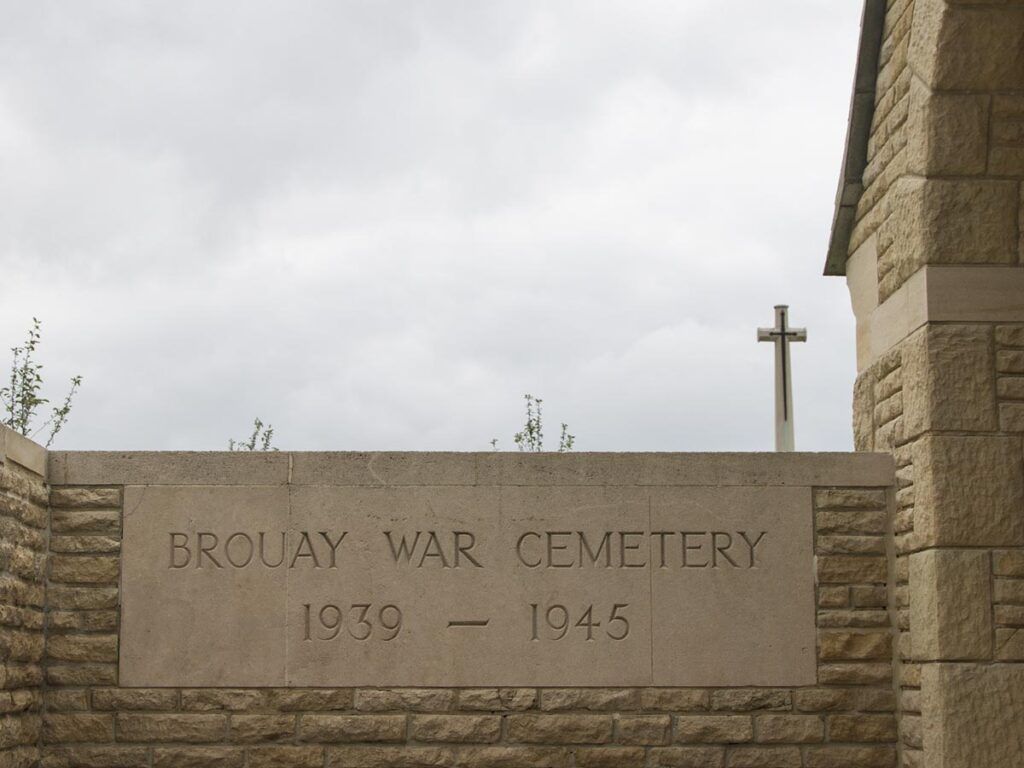
World War II in Normandy
Between June 8 and 16, 1944, intense battles raged near the village of Brouay. These conflicts were part of the larger Operation Overlord, the Allied invasion of Normandy that began on D-Day (June 6, 1944).
After establishing beachheads, Allied forces pushed inland toward Caen. This city was a key objective but proved difficult to capture. The Germans fiercely defended the area, leading to bloody fighting in the surrounding villages and countryside.
Many Canadian soldiers rest in Brouay, reflecting their significant role in this sector of the Normandy front. Their units faced determined German resistance as they advanced south of their Juno Beach landing area.
When you visit the cemetery, you’ll be standing on ground where the future of Europe was decided. The neat rows of graves represent the human cost of liberating France from Nazi occupation during this pivotal moment in World War II history.
Visiting the Cemetery
Brouay War Cemetery offers visitors a solemn place to pay respects to the fallen soldiers of World War II. This peaceful site contains 377 Commonwealth burials from the heavy fighting that occurred in Normandy during June and July 1944.
Location and Access
Brouay War Cemetery is located in the small commune of Brouay in the Calvados department of Normandy, France. You’ll find it approximately 10 kilometers west of Caen and about 15 kilometers east of Bayeux. The cemetery is accessible by car via the D9 road.
Public transportation options are limited, so renting a car is your best bet for reaching this site. If you’re coming from Caen or Bayeux, follow signs toward Brouay, and you’ll find the cemetery well-marked along the route.
The cemetery is open to visitors daily from sunrise to sunset, and like all Commonwealth War Graves Commission sites, entry is free of charge. Parking is available near the entrance, though spaces may be limited during peak tourist season.
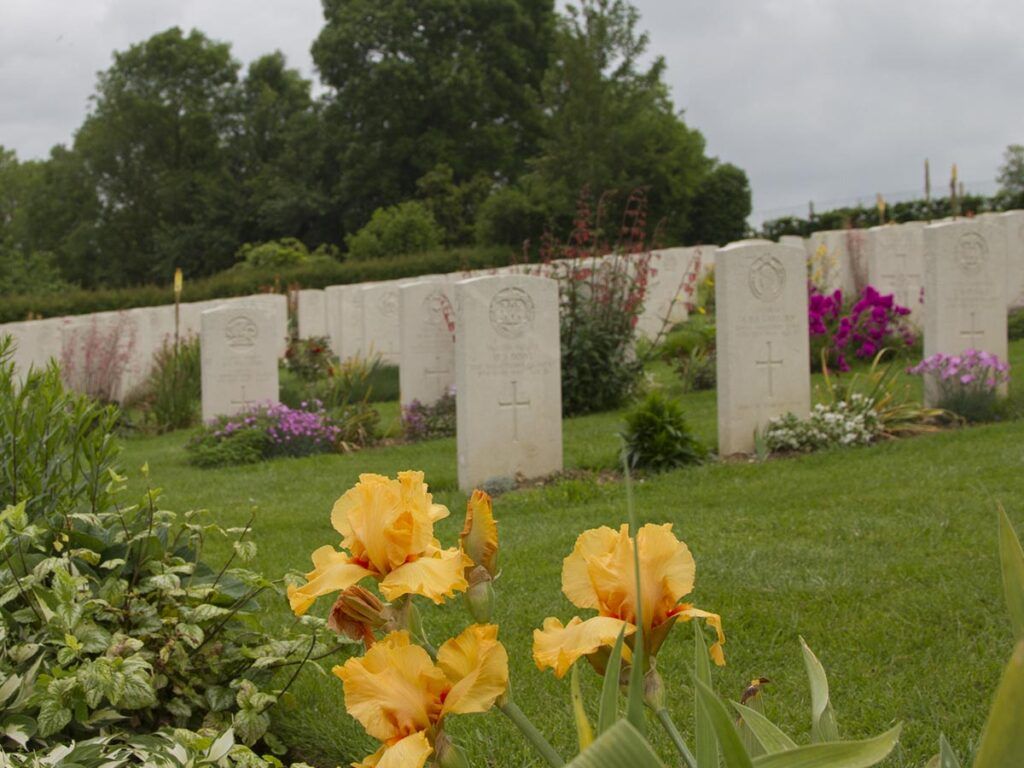
Best Times to Visit
The most ideal time to visit Brouay War Cemetery is during late spring through early autumn (May to September). During these months, the weather in Calvados is generally pleasant with temperatures ranging from 60-75°F (15-24°C).
June is particularly significant as it marks the anniversary of D-Day and the Battle of Normandy. If you visit during this time, you might witness commemoration ceremonies. However, be prepared for larger crowds.
Early mornings offer the most tranquil experience, with fewer visitors and beautiful light for photography. The cemetery is especially moving near sunset when the last light falls across the pristine white headstones.
Avoid visiting during heavy rain as the pathways can become slippery. Winter visits are possible but prepare for shorter daylight hours and potentially cold, wet conditions.
Nearby Accommodations
Bayeux, located about 15 kilometers west of Brouay, offers the best selection of accommodations for your visit. This charming town features numerous hotels and bed-and-breakfasts ranging from budget-friendly to luxury options.
Recommended hotels:
Caen, slightly larger and about 10 kilometers east, provides additional options including chain hotels and apartment rentals. Both towns make excellent bases for exploring Brouay and other Normandy D-Day sites.
For a more unique experience, consider staying at one of the rural gîtes (vacation rentals) in the surrounding Calvados countryside. These provide a peaceful retreat after days spent touring the emotional war sites.
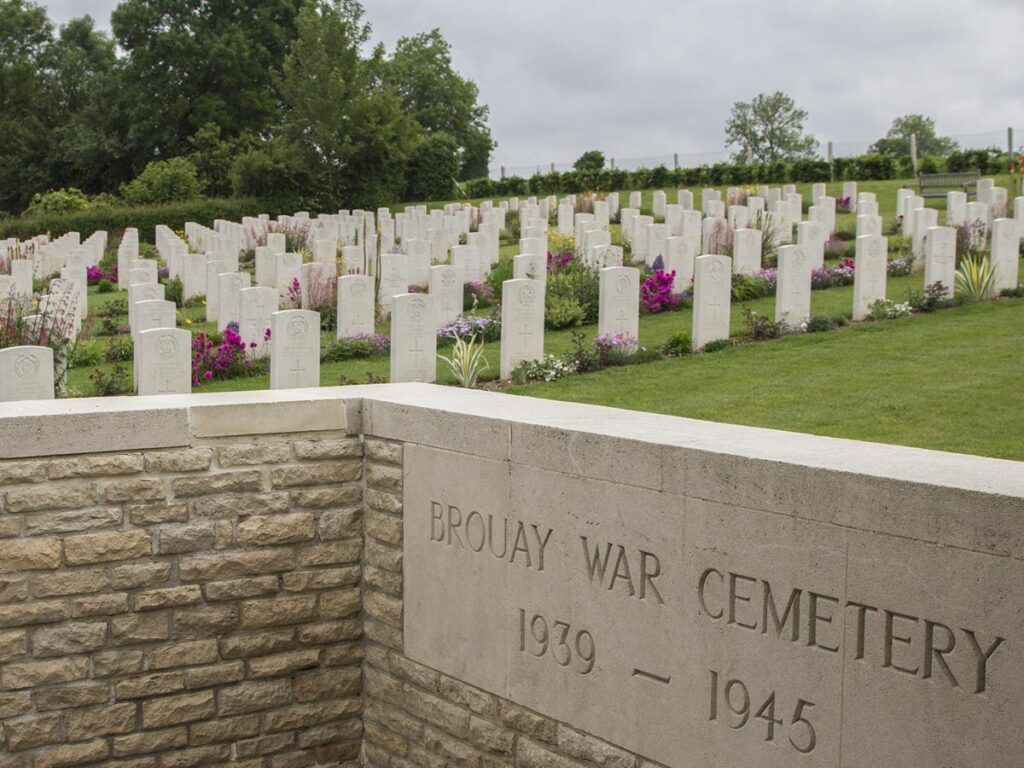
Guided Tours
Several tour companies offer guided visits to Normandy’s WWII sites, including Brouay War Cemetery. These tours typically depart from Bayeux or Caen and provide valuable historical context about the Battle of Normandy.
Recommended D-Day Tours from Paris:
- From Paris: Normandy D-Day Beaches Day Trip
- From Paris: 2-Day Normandy & Brittany Tour
- Normandy American D-Day Experience (From Bayeux Station)
Recommended D-Day Tours from Bayeux:
- From Bayeux: American D-Day Sites in Normandy Full-Day Tour
- From Bayeux: American D-Day Sites in Normandy Half-Day Tour
- From Bayeux: Half-Day Normandy WWII Sidecar Tour
- Full-Day US Battlefields of Normandy Tour from Bayeux
Recommended Private D-Day Tours:
- From Paris: Normandy D-Day Landing Beaches Full-Day Tour
- From Rouen: Normandy D-Day Beaches Private Full-Day Tour
- Private Tour: Rouen, Bayeux, and Falaise Day Trip from Bayeux
- Normandy WWII Private Half-day Sidecar Tour From Bayeux
Recommended Band of Brothers Tours:
Tours usually last 4-8 hours and cover multiple sites in the area. Prices range from €70-150 per person depending on group size and tour length.
For a more personalized experience, private guides can be arranged through your hotel or the Bayeux Tourism Office. These experts offer detailed information about specific regiments and battles connected to Brouay Cemetery.
If you prefer self-guided exploration, informational panels at the cemetery provide background on the site and its significance. The Commonwealth War Graves Commission also offers a free downloadable guide with historical details and burial records.
Notable Burials and Memorials
Brouay War Cemetery serves as a solemn resting place for 377 fallen soldiers, including seven unidentified service members. These graves tell the story of the fierce battles that took place during the Normandy campaign of June and July 1944.
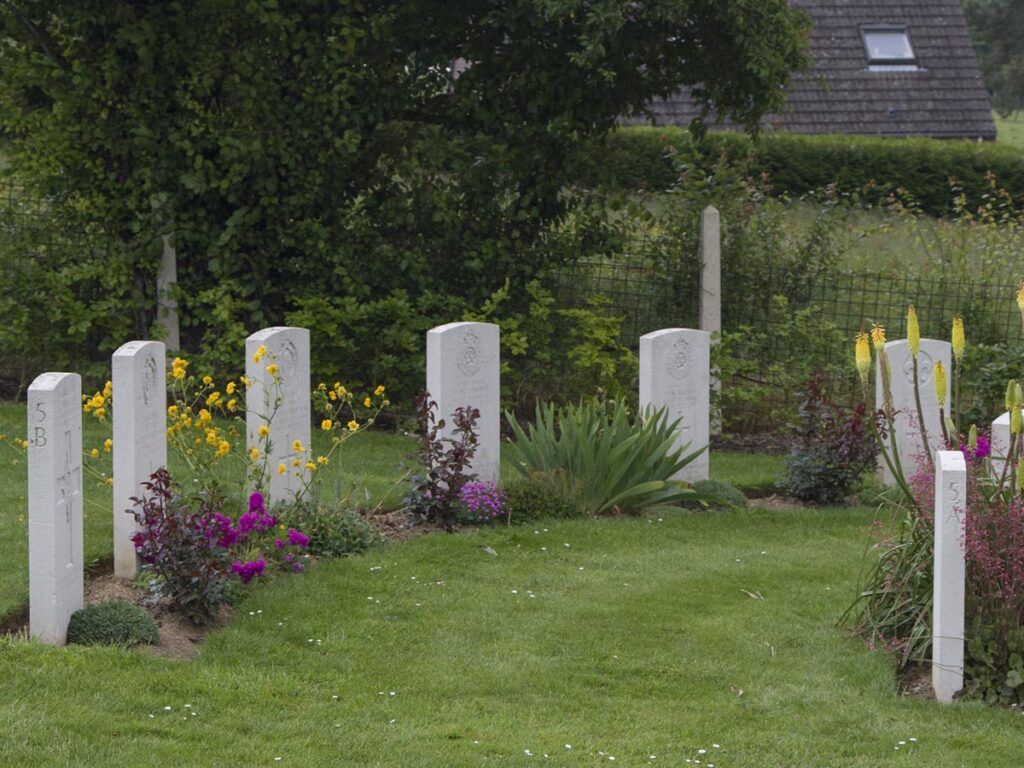
Royal Air Force Volunteer Reserve Honors
As you walk through Brouay’s peaceful grounds, you’ll notice several graves belonging to the Royal Air Force Volunteer Reserve. These brave airmen supported Allied operations during the Normandy landings and subsequent push inland.
Each headstone includes the service member’s name, service number, and the distinctive RAF insignia. The volunteer nature of their service is particularly poignant—these were civilians who stepped forward when their country needed them most.
Look for memorial pages near the cemetery entrance that provide additional details about these airmen. Many were lost when their aircraft were shot down during reconnaissance or bombing missions supporting ground troops in the Caen area.
Royal Artillery Tributes
The Royal Artillery played a crucial role in the Normandy campaign, and many of its members are honored at Brouay. These soldiers operated the heavy guns that provided vital fire support for advancing infantry.
You’ll find their graves marked with the Royal Artillery’s badge—a cannon with the motto “Ubique” (Everywhere). Each headstone tells a small part of the larger story of the fight for Normandy.
As you explore, note how many artillery units are represented here. These men served in field batteries that were positioned around the Caen area, providing covering fire for operations aimed at encircling this strategic city.
Royal Marines Commemorations
The Royal Marines have a special place of honor within Brouay Cemetery. These elite troops were among the first to land on the Normandy beaches and continued fighting through the difficult summer campaign of 1944.
Two chaplains are also buried in the cemetery, including Reverend Gerard Nesbitt. His grave stands as a reminder of the spiritual support provided to troops during the most challenging circumstances.
The Royal Marines’ headstones feature their distinctive globe and laurel insignia. Each one represents a Marine who fell while helping to establish the Allied foothold in France that would eventually lead to victory in Europe.
Take a moment at these graves to appreciate the sacrifice of these commandos who fought in some of the most difficult conditions of the campaign.
Architecture and Layout
Brouay War Cemetery stands as a solemn tribute to those who fell during the Normandy campaign. The site’s thoughtful design combines functionality with respectful remembrance, creating a peaceful place for visitors to honor the sacrifices made.
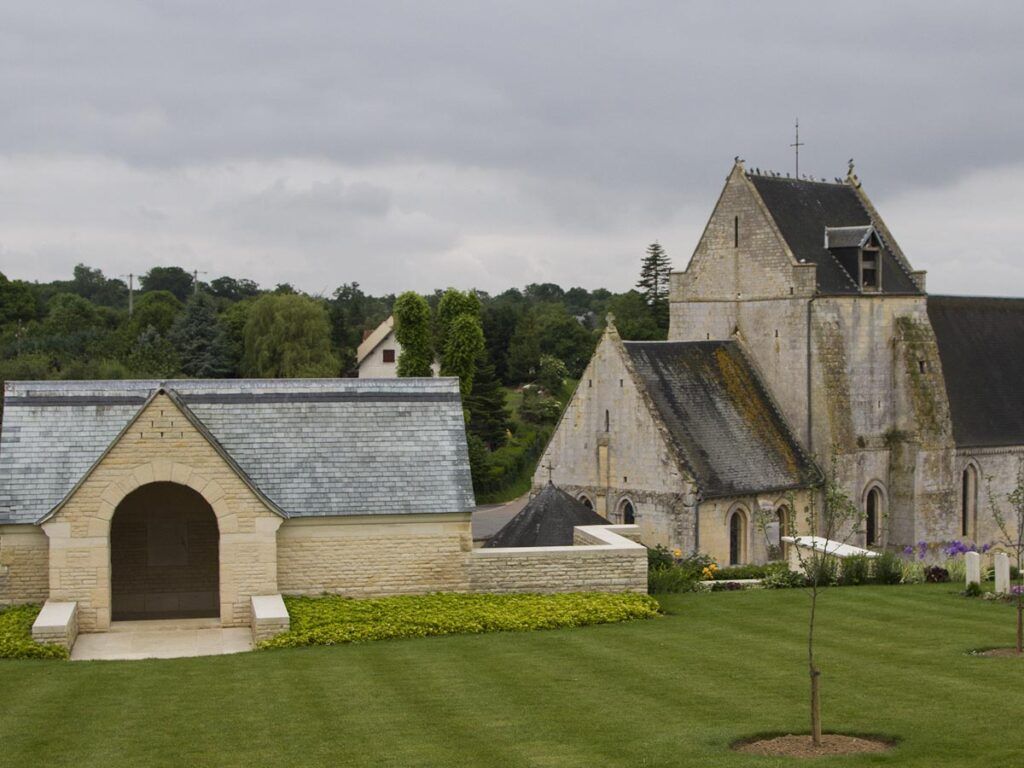
Design of the Cemetery
The cemetery follows a rectangular layout, designed by renowned architect P.D. Hepworth. As you enter, you’ll notice two large stone columns marking the entrance, creating a dignified gateway to this sacred ground. The cemetery sits adjacent to Brouay’s village church, integrating it into the local landscape.
The 377 graves are arranged in neat, orderly rows across the grounds. This organization creates a sense of military precision that reflects the disciplined lives of those buried here.
The site’s layout poses some accessibility challenges. Unfortunately, the current design and location make wheelchair access difficult or impossible. If you have mobility concerns, you may want to contact the Commonwealth War Graves Commission before visiting.
Symbolism and Engravings
Throughout the cemetery, you’ll find thoughtful symbolic elements that honor the fallen. The headstones follow the Commonwealth War Graves Commission’s standard design – uniform in size and shape to represent equality in death regardless of rank or background.
Each headstone bears carefully engraved details about the deceased, including:
- Name and rank
- Military unit
- Date of death
- Age (when known)
- Religious symbol (if applicable)
- Personal inscription chosen by family
Seven graves contain unidentified soldiers, marked simply as “Known Unto God.” This phrase, chosen by Rudyard Kipling, serves as a poignant reminder of war’s terrible cost.
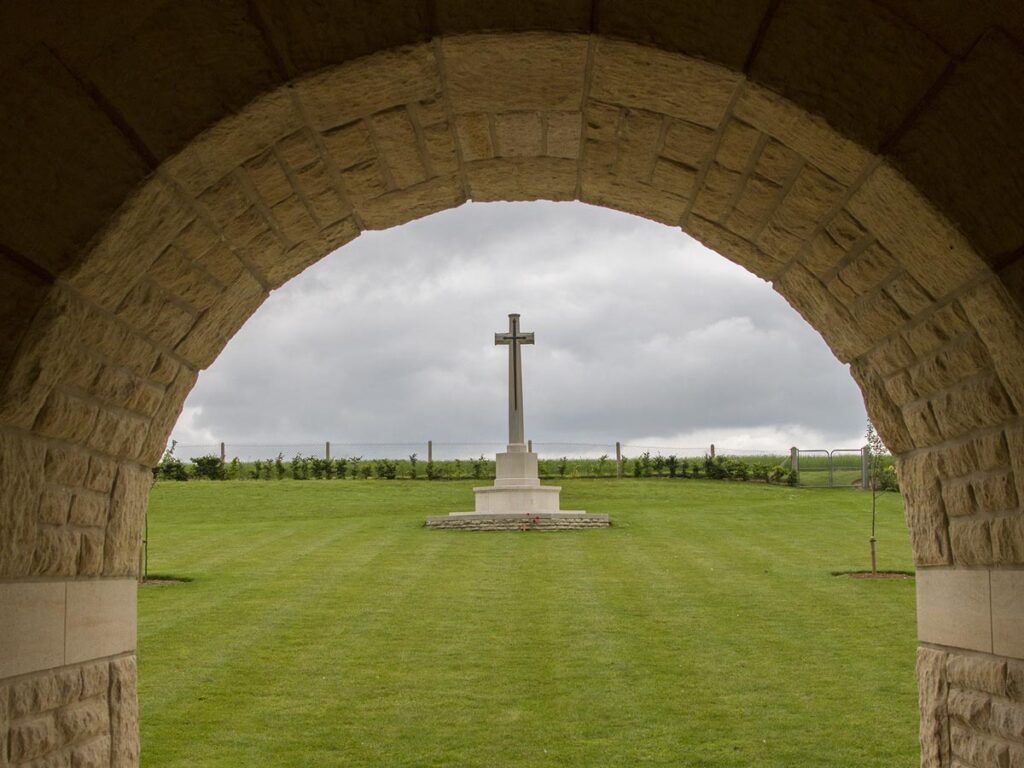
Nearby Attractions
Brouay War Cemetery is surrounded by rich historical sites and museums that give context to the D-Day landings and Normandy campaign. The region offers both solemn reminders of sacrifice and educational experiences about World War II.
Sites of Historical Interest
The Site fortifié Hillman is just a short drive from Brouay. This former German strongpoint gives you a glimpse into the defensive structures that Allied forces encountered during the invasion.
You’ll find several other war cemeteries worth visiting nearby. Banneville-la-Campagne War Cemetery and Douvres-la-Délivrande British War Cemetery contain the remains of soldiers who fell during the early days of the liberation of Normandy.
Ranville War Cemetery is particularly significant as it holds some of the earliest D-Day casualties. The adjacent Ranville Churchyard contains graves of paratroopers who landed in the first hours of June 6, 1944.
For a deeper understanding of the invasion beaches, head to the coast where you can walk on Juno and Gold beaches, approximately 15-20 minutes from Brouay.
Museums and Exhibitions
The Caen Memorial Museum is a must-visit attraction about 20 minutes from Brouay. This impressive institution covers not only World War II but also the Cold War era and the path to peace.
In Bayeux, you’ll find the Museum of the Battle of Normandy which houses an extensive collection of military vehicles, weapons, and personal artifacts. This museum provides excellent context for understanding what you’ve seen at Brouay War Cemetery.
Don’t miss the famous Bayeux Tapestry Museum. While this chronicles an earlier invasion (1066), it’s a cultural treasure that helps you understand Normandy’s long history of strategic importance.
For families, Parc Festyland offers a more lighthearted experience after visiting the more somber war sites. It’s Normandy’s largest amusement park and provides a welcome break, especially if traveling with children.
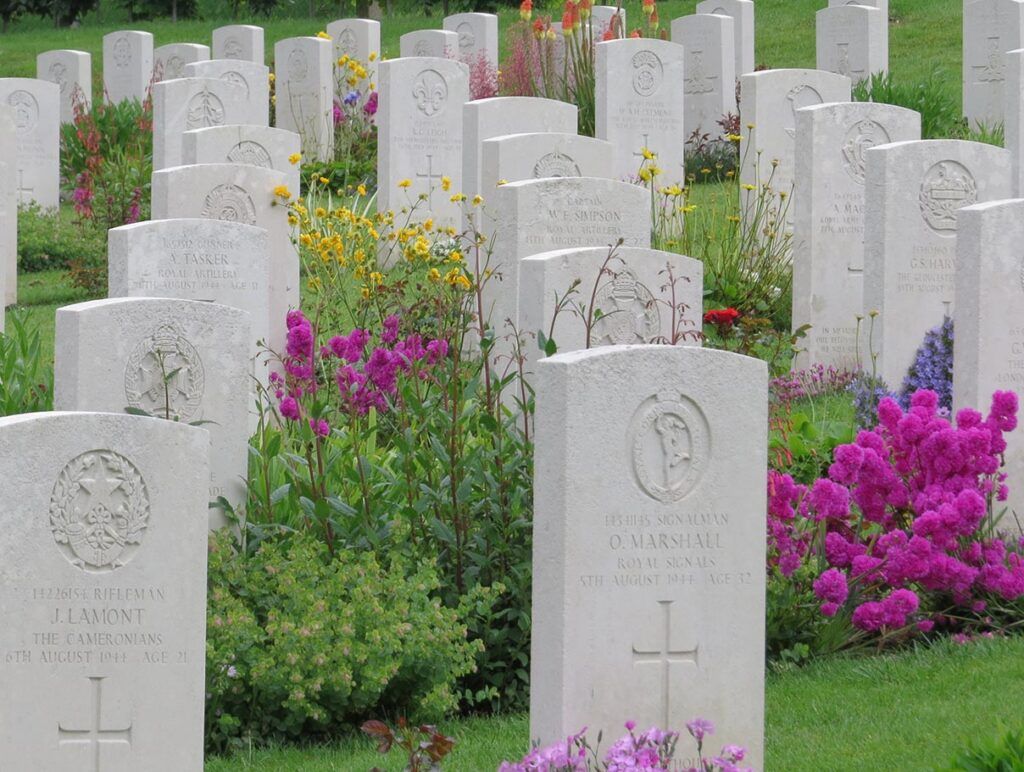
Honoring the Fallen
Visiting Brouay War Cemetery offers meaningful ways to pay respect to those who sacrificed their lives during the Normandy Campaign. The cemetery provides a solemn space for reflection and remembrance of the 377 servicemen buried here.
Annual Commemorations
Each year, Brouay War Cemetery hosts several important commemorative events. The most significant takes place on June 6th, marking the D-Day landings anniversary. You’ll find veterans, families, and officials gathering to honor the fallen through ceremonies featuring wreath-laying and moments of silence.
The Commonwealth War Graves Commission also organizes “The Great Vigil” at selected Normandy cemeteries, including Brouay. During this moving event, candles illuminate the graves as visitors pay their respects at twilight.
Local French schoolchildren often participate in remembrance activities here, placing flowers on graves and learning about the sacrifice of Allied soldiers who helped liberate their country.
Roll of Honour
The Roll of Honour at Brouay War Cemetery lists the names of all 377 servicemen laid to rest here, including seven unidentified soldiers. Most of these brave individuals fell during the intense fighting of June and July 1944 following the D-Day landings.
You can search for specific names at the cemetery’s entrance, where registry books are maintained. Many of the buried servicemen received military medals for their bravery, including some who earned the Military Medal for acts of gallantry.
Walking among the perfectly aligned headstones, you’ll notice the different military regiments represented. Each headstone bears the regimental insignia, name, rank, and date of death, creating a permanent tribute to these heroes who never returned home.
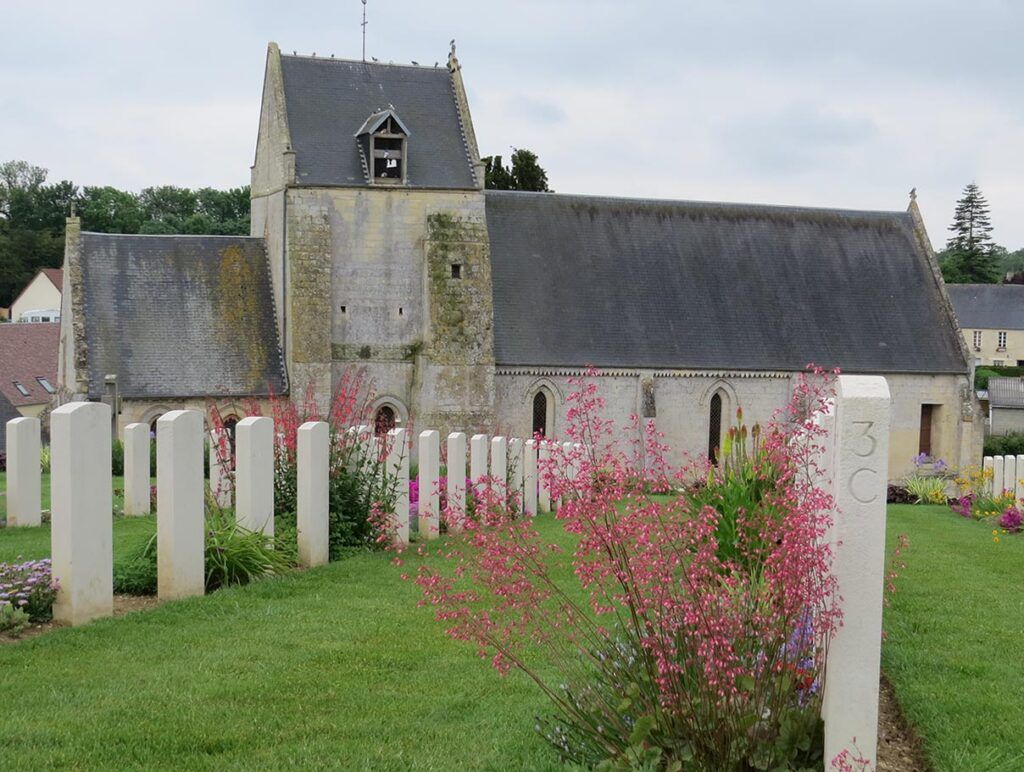
Further Information
For visitors seeking to deepen their experience at Brouay War Cemetery, there are several resources available to help understand its historical significance and to research personal connections to those buried there.
Educational Resources
The Commonwealth War Graves Commission (CWGC) provides excellent materials for understanding Brouay War Cemetery’s role in World War II history. Their website offers detailed information about the cemetery’s establishment following the heavy fighting in Normandy during June and July 1944.
You can access interactive maps showing the layout of the 377 burials, including the seven unidentified soldiers. These resources help you visualize the scale of sacrifices made during the Normandy campaign.
Several local museums near Bayeux and Caen offer complementary exhibits that put Brouay into the broader context of Operation Overlord. Many provide educational pamphlets specifically designed for students and families.
You’ll find QR codes at the cemetery entrance linking to audio guides that explain key events of the battles that occurred nearby.
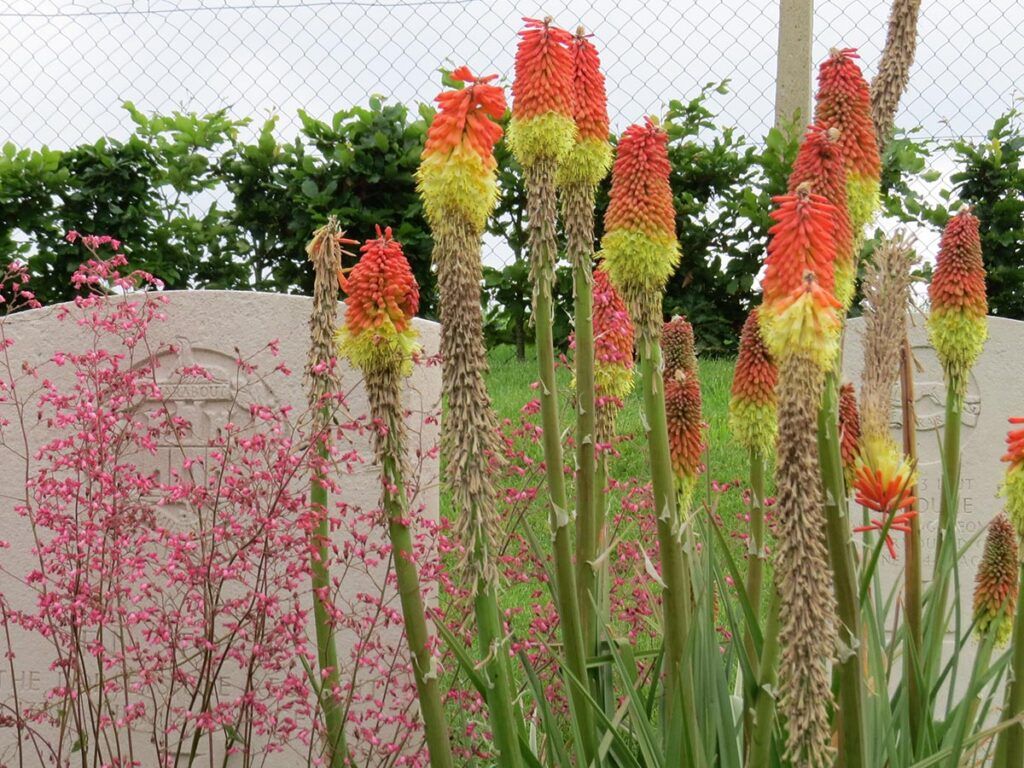
Genealogical Research
If you’re researching a family member buried at Brouay, the CWGC maintains comprehensive records for each identified soldier. Their database includes service numbers, unit affiliations, dates of death, and often additional biographical details.
The cemetery’s memorial page contains photographs of many headstones and can be accessed online before your visit. This helps you locate specific graves efficiently when you arrive.
Local archives in Bayeux and Caen hold unit diaries and battle reports that might mention individual soldiers. Staff can assist you in navigating these collections by appointment.
For more in-depth research, consider contacting:
- National military archives in the soldier’s home country
- Regimental museums associated with particular units
- The Normandy Memorial Trust, which maintains additional records
Many visitors find it meaningful to bring copies of service photos or letters to leave at gravesites.

